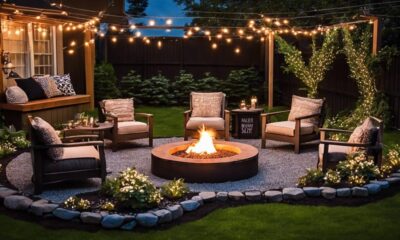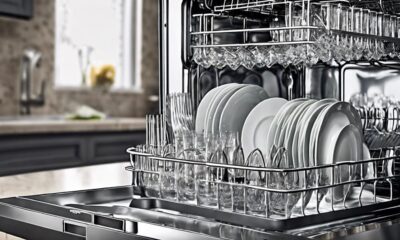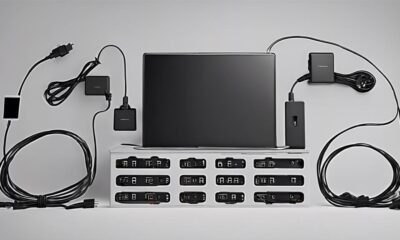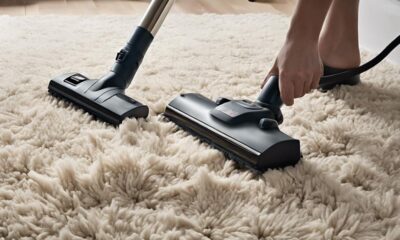Appliances
Bulb Base
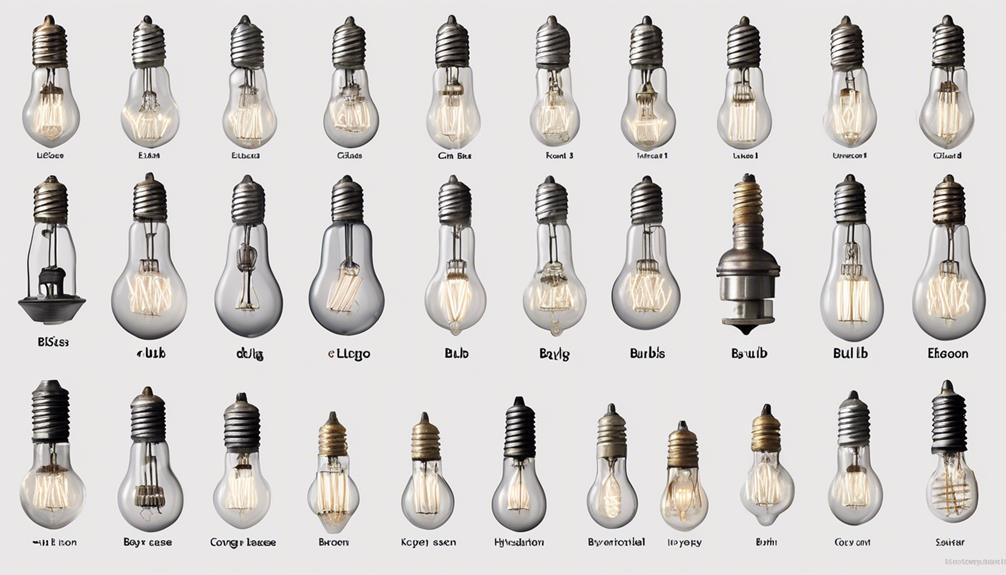
We have all faced the frustration of attempting to force a square peg into a round hole. It is a straightforward yet powerful analogy for the significance of comprehending bulb bases in relation to lighting fixtures.
The right bulb base ensures a seamless connection, while the wrong one can leave you in the dark. But before we dive into the nitty-gritty of bulb bases, let's shed some light on the significance of this often overlooked component.
Whether you're a seasoned lighting enthusiast or a newcomer to the world of illumination, the intricacies of bulb bases can impact the functionality and aesthetics of your lighting setup in ways you may not have considered.
Key Takeaways
- Bulb bases are crucial for selecting the right bulbs for specific lighting needs.
- Different bases are designed for specific voltage ranges, ensuring safety and optimal performance.
- Standard screw bases are versatile and easy to install, making them a popular choice in horticultural lighting.
- Bayonet bases offer secure and quick installation, enhancing efficiency and performance of lighting systems.
Understanding Bulb Bases
Understanding bulb bases is essential for selecting the right bulbs for specific lighting needs. The bulb base serves as the connection point between the bulb and the fixture. It's crucial to consider the voltage requirements of the bulb base to ensure compatibility with the electrical system. Different bases are designed to accommodate specific voltage ranges, and using the correct base is vital for safety and optimal performance.
Heat dissipation is another critical factor influenced by the bulb base. The base design affects how efficiently the bulb can dissipate heat. Proper heat dissipation is essential for the longevity and performance of the bulb. It also impacts the surrounding environment, particularly in enclosed fixtures or areas with limited ventilation.
When selecting bulbs for planting, understanding the features of their bases is crucial for ensuring they meet the required voltage specifications and have adequate heat dissipation capabilities. This knowledge empowers horticulturists to make informed decisions when choosing bulbs for various planting applications.
Standard Screw Bases

Standard screw bases are commonly used in horticultural lighting fixtures due to their versatility and ease of installation. These bases are a popular choice for horticulturists when it comes to bulb installation because they are compatible with a wide range of bulbs and fixtures. They are available in various socket sizes, making them suitable for different horticultural lighting setups.
Here are some key points to consider when working with standard screw bases:
- Versatility: Standard screw bases accommodate a variety of bulb types, including incandescent, LED, and CFL bulbs. This provides flexibility for horticultural lighting needs.
- Ease of Installation: These bases are easy to install and replace, allowing for quick maintenance and adjustments to the lighting setup in horticultural environments.
- Socket Sizes: Standard screw bases come in different socket sizes such as E26 and E27. This offers options for fitting various bulbs into horticultural lighting fixtures.
Understanding the benefits and specifications of standard screw bases is essential for horticulturists aiming to optimize their lighting systems for plant growth and health.
Bayonet Bases
Having discussed the benefits and specifications of standard screw bases, our attention now turns to the practical applications and features of bayonet bases in horticultural lighting fixtures.
Bayonet bases, known for their secure and quick installation, are commonly used in horticultural lighting due to their robust design and ease of use. When it comes to bayonet base installation, it's essential to align the pins correctly and then give a quarter turn to secure the bulb in place. Troubleshooting bayonet bases involves checking for any bent or damaged pins and ensuring that the base is clean and free of debris.
For those looking to upgrade their horticultural lighting fixtures, bayonet base retrofitting provides a convenient solution. By replacing existing sockets with bayonet bases, one can take advantage of the benefits they offer, such as reliable connection and ease of maintenance. Upgrades to bayonet bases can also enhance the overall efficiency and performance of the lighting system.
Understanding the intricacies of bayonet bases is essential for horticultural lighting professionals seeking to optimize their systems.
Pin Bases
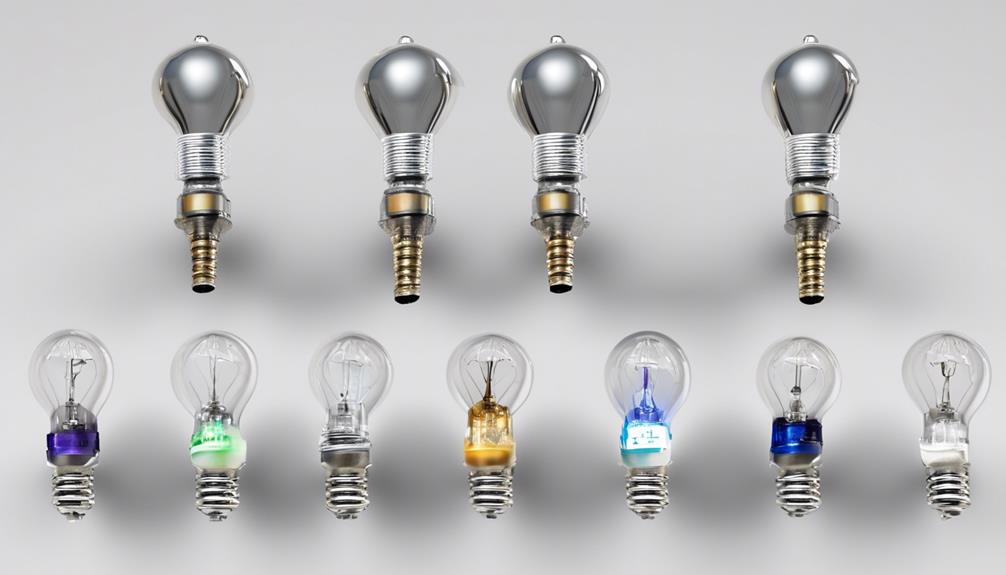
When implementing horticultural lighting fixtures, pin bases are crucial components that provide secure and efficient connectivity for the bulbs. Pin bases are commonly found in T5, T8, and T12 fluorescent lamps, as well as some LED fixtures. These bases come in various configurations, including bi-pin, miniature bi-pin, and medium bi-pin, each suited for specific bulb types and wattages.
- Voltage requirements: Pin bases come in different voltages to meet the specific needs of horticultural lighting systems. It's essential to match the voltage rating of the pin base with the electrical requirements of the fixture to ensure safe and efficient operation.
- Heat dissipation: Proper heat dissipation is critical for the longevity and performance of horticultural lighting systems. Pin bases are designed to facilitate effective heat dissipation, preventing excessive heat buildup around the connection point and ensuring the longevity of both the base and the connected bulb.
Selecting pin bases with the correct voltage rating and ensuring adequate heat dissipation will contribute to the overall reliability and safety of horticultural lighting systems, supporting optimal plant growth and development.
Bi-Pin Bases
Pin bases are essential components for horticultural lighting fixtures, and when it comes to bulb connectivity, the bi-pin bases play a crucial role in providing secure and efficient attachment for specific bulb types and wattages. Bi-pin bases, also known as bipin or bi pin bases, feature two small pins that securely hold the bulb in place. These bases are commonly used in T8 and T5 fluorescent tubes, as well as in some types of LED and halogen bulbs. One key advantage of pin bulbs is their ability to provide a secure and stable connection, minimizing the risk of flickering or intermittent lighting. Bi-pin compatibility is an important factor to consider when selecting bulbs for horticultural fixtures, as it ensures a proper fit and reliable performance. When choosing bi-pin fixtures, it is crucial to ensure that the base type matches the bulb type to guarantee proper connectivity. The table below provides a comparison of various bi-pin bases commonly used in horticultural lighting fixtures.
| Bi-Pin Base Type | Description |
|---|---|
| G13 | Used in T8 tubes |
| G5 | Common in T5 tubes |
| GU5.3 | Found in MR16 LEDs |
| G4 | Used in halogen bulbs |
| GX5.3 | Common in projector bulbs |
These bi-pin bases offer secure and efficient connectivity for specific bulb types and wattages, making them essential for horticultural lighting applications.
Twist and Lock Bases
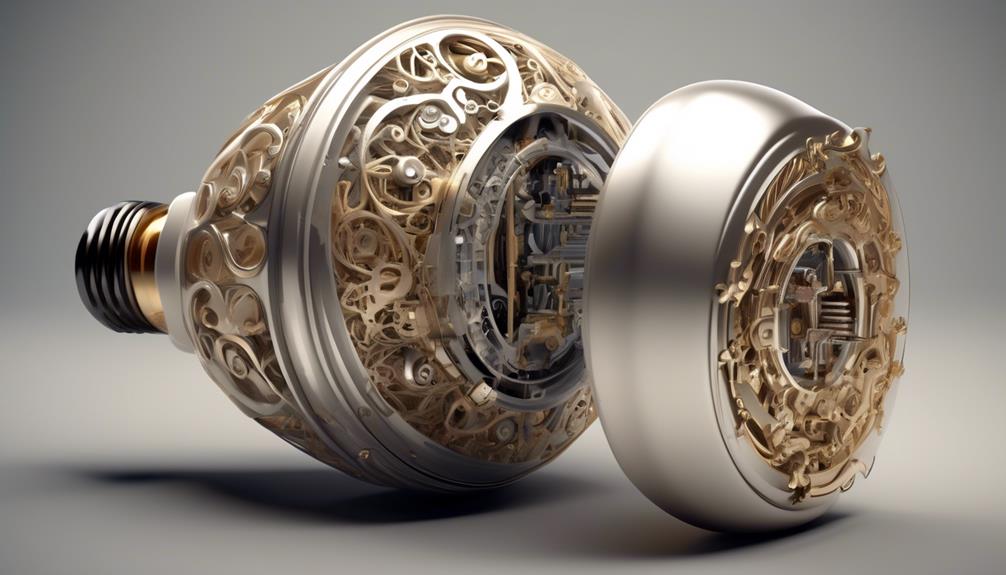
Twist and Lock Bases provide a secure and reliable method for connecting bulbs in horticultural lighting fixtures, ensuring stability and minimizing the risk of disconnection. When installing bulbs with twist and lock bases, it's crucial to follow the installation process carefully to guarantee proper functioning and longevity of the lighting system.
To ensure safety and optimal performance, it's important to keep in mind the following safety precautions:
- Alignment: Ensure that the pins on the bulb are aligned with the slots in the fixture before twisting and locking the bulb into place.
- Firm Pressure: Apply firm and even pressure while twisting the bulb into the fixture to prevent any damage to the base or the fixture.
- Check Compatibility: Prior to installation, always verify that the twist and lock base of the bulb is compatible with the fixture to avoid any potential issues.
Following these safety precautions and adhering to the correct installation process will help to maintain the integrity of the twist and lock bases, ensuring a reliable and secure connection for horticultural lighting applications.
Mogul Bases

When it comes to mogul bases, we're talking about big, sturdy bases designed for heavy-duty applications. These bases come in larger sizes, typically E39 or E40, and are compatible with high-wattage bulbs.
They're commonly used in industrial, commercial, and outdoor lighting fixtures due to their ability to handle high power levels.
Size and Compatibility
Mogul bases, also known as E39 bases, are commonly used in larger, high-wattage bulbs such as metal halide and high-pressure sodium lamps. When dealing with mogul bases, it's essential to understand the size variations and bulb compatibility to ensure a proper fit and optimal performance. Here are some key points to consider:
- Bulb Compatibility: Ensure the bulb's base matches the mogul socket. Some high-wattage bulbs may require a mogul base adapter for compatibility.
- Size Variations: Mogul bases come in different sizes, so it's crucial to select the appropriate size for your specific fixture to prevent any installation issues.
- Socket Options, Installation Tips: Double-check the socket type and size before purchasing a bulb. Proper installation is critical for safety and performance.
Understanding these aspects will help in selecting the right mogul base for your lighting needs.
Applications and Fixtures
Applications for mogul bases extend beyond just high-wattage bulbs, finding use in a variety of fixtures for industrial, commercial, and outdoor lighting needs. When considering socket types, it's important to note that mogul bases typically have an E39 designation, which is the standard for this type of base.
Wattage limitations are also crucial to consider, as mogul bases are designed to accommodate high-wattage bulbs ranging from 150 watts to as high as 1000 watts.
Base compatibility is a key factor in choosing fixtures for mogul bases, as they're commonly used in high bay fixtures, street lights, and area lights. When selecting fixtures for mogul bases, it's essential to consider the specific applications and environmental conditions to ensure optimal lighting performance.
Intermediate Bases
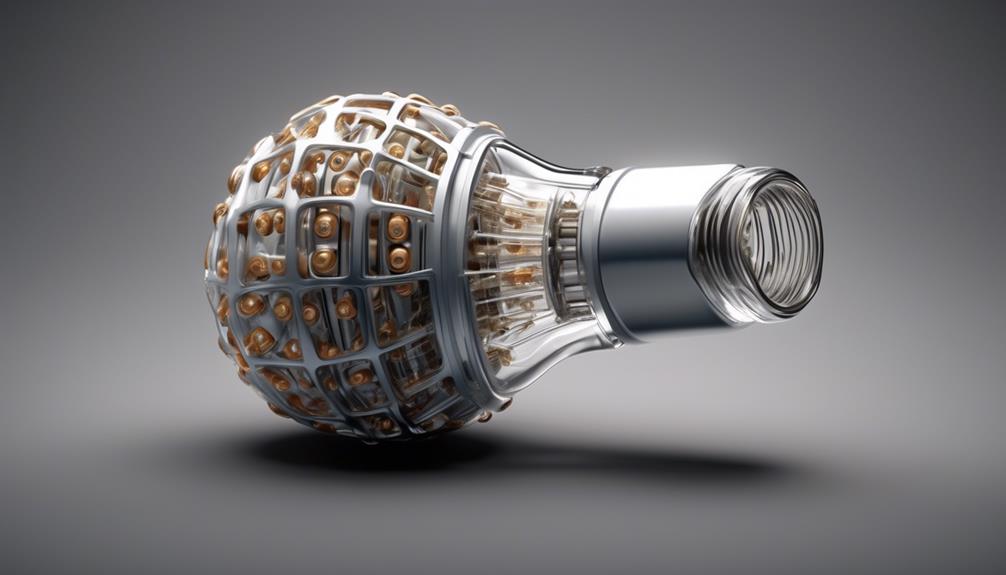
Intermediate bases, such as the E26 and E27, serve as essential connectors between the bulb and the fixture, ensuring proper electrical contact and stability. These bases come in various configurations and materials to accommodate different lighting needs and environments.
When dealing with intermediate bases, it's important to consider the following:
- Base Variations: Understanding the different base variations is crucial for selecting the right one for your fixture. The E26 and E27 bases, for example, are widely used in residential and commercial settings due to their versatility and compatibility with a wide range of bulbs.
- Installation Techniques: Proper installation of intermediate bases is critical to ensure a secure connection and to prevent any electrical hazards. It's essential to follow the manufacturer's guidelines and ensure that the base is securely fastened to the fixture.
- Base Material and Heat Resistance: The material of the intermediate base plays a vital role in its heat resistance. Heat-resistant materials such as ceramic are commonly used to withstand the high temperatures generated by certain types of bulbs, providing a durable and safe connection.
Understanding these aspects of intermediate bases will enable a seamless integration of bulbs into fixtures, ensuring optimal performance and safety.
Candelabra Bases
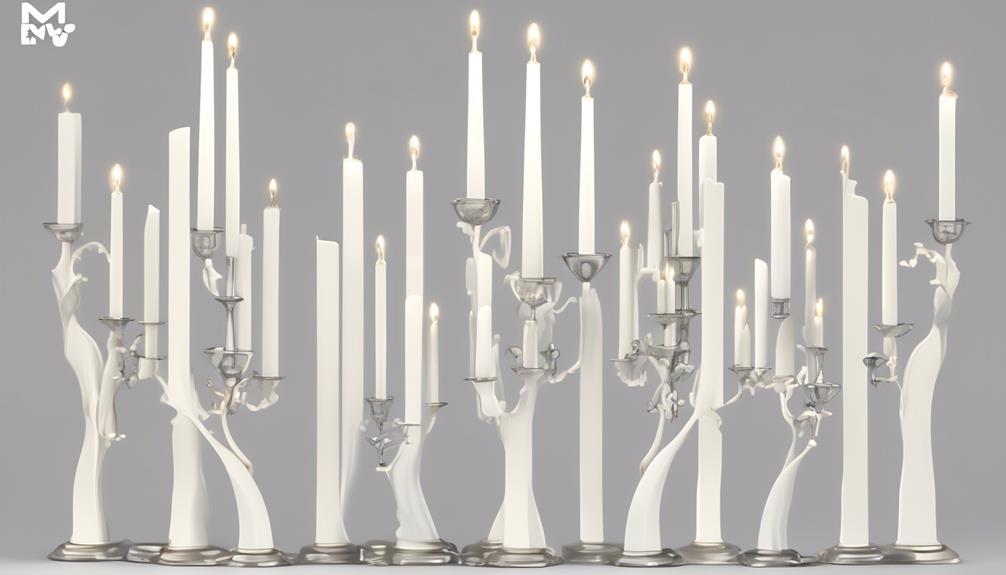
When upgrading from intermediate bases to candelabra bases, it's essential to consider the differences in size and compatibility with fixtures to ensure a proper fit and electrical connection. Candelabra bases, also known as E12 bases, are characterized by their smaller size compared to intermediate or standard bases. These bases are commonly found in decorative lighting fixtures such as chandeliers, wall sconces, and pendant lights.
One of the key considerations when using candelabra bases in modern fixtures is their energy efficiency. With advancements in technology, candelabra base alternatives, such as LED bulbs, are now available, offering energy-saving benefits without compromising on the aesthetic appeal of decorative lighting.
When transitioning to candelabra bases, it's crucial to verify that the fixtures are compatible with the smaller base size. Some modern fixtures may require specific adapters or modifications to accommodate candelabra bases properly. Understanding the electrical requirements and ensuring proper fixture compatibility will help maintain the integrity and safety of the lighting installation.
Additionally, when using candelabra bases in decorative lighting, it's important to select bulbs that complement the overall design and ambiance of the space. By considering these factors, one can effectively navigate the transition to candelabra bases while maximizing energy efficiency and preserving the decorative appeal of lighting fixtures.
Miniature Bases

Miniature bases, also known as E5 bases, are characterized by their even smaller size compared to candelabra bases and are commonly used in compact lighting fixtures such as indicator lights and miniature lamps. When dealing with miniature bases, it's essential to consider bulb sizes and compatibility to ensure proper fit and function.
Some important considerations when working with E5 bases include:
- Bulb Sizes: Miniature bases typically accommodate smaller bulb sizes, such as T1, T1-3/4, and T2, which are commonly used in indicator lights and other compact applications. Understanding the specific bulb sizes compatible with E5 bases is crucial for selecting the right bulbs for your fixtures.
- Compatibility: Since miniature bases are smaller than candelabra bases, it's important to ensure that the fixtures you intend to use them with are compatible with E5 bases. Checking the fixture specifications and consulting with manufacturers can help ensure that the bases and bulbs are suitable for your lighting needs.
- Fixture Applications: Due to their small size, miniature bases are commonly used in applications where space is limited, such as indicator lights, miniature lamps, and other compact lighting fixtures. Understanding the specific fixture applications suitable for E5 bases is essential for efficient and effective lighting solutions.
Understanding the intricacies of miniature bases and their compatibility with various bulb sizes and fixture applications is crucial for achieving optimal lighting performance.
Wedge Bases

Wedge bases are a common type of bulb base used in various lighting fixtures. They come in different sizes and shapes to fit specific sockets and provide a secure connection.
The wedge base design offers the advantage of easy installation and removal, making it a popular choice for both residential and commercial lighting applications.
Types of Wedge Bases
Widely used in landscape lighting, automotive lighting, and certain specialty applications, wedge bases are characterized by their wedge-shaped design and are available in various types to accommodate different lighting fixtures and needs. When considering wedge base options, it's essential to understand the specific types available to ensure compatibility with the intended fixtures.
The following types of wedge bases are commonly used:
- T5 Wedge Base: Commonly used in landscape lighting, this type is designed for low-voltage applications.
- T10 Wedge Base: Suitable for automotive lighting, this type is often used in car interior and exterior lights.
- T20 Wedge Base: Found in specialty applications, this type is used in certain indicator lights and decorative fixtures.
Understanding these wedge base features helps in selecting the right type for specific lighting requirements.
Uses of Wedge Bases
In various lighting applications, such as landscape and automotive lighting, wedge bases serve as essential components due to their specific design and compatibility with low-voltage and specialty fixtures.
The uses of wedge bases are diverse, ranging from pathway lighting and accent lighting in gardens to interior car lighting. Their advantage lies in the ease of installation and replacement, making them ideal for areas where accessibility is a challenge. Additionally, their compact size allows for discreet placement in tight spaces.
However, it's important to consider the wattage limitations of wedge bases, as they're typically designed for lower wattage bulbs. This makes them suitable for decorative and accent lighting, but less appropriate for high-intensity illumination.
Understanding the specific uses and wattage limitations of wedge bases is crucial for achieving optimal lighting results.
Advantages of Wedge Bases
One notable advantage of wedge bases is their compatibility with low-voltage and specialty fixtures in various lighting applications, making them a versatile and practical choice.
When considering the advantages of wedge bases, it's important to note that they offer easy installation and removal. Their compact size also allows for a more focused and directional light output, making them ideal for accent lighting in gardens and pathways.
Additionally, the secure connection of wedge bases ensures reliable performance in outdoor environments, withstanding vibrations and shocks. This makes them suitable for landscape lighting systems where durability is crucial.
Medium Bases

Medium bases are commonly used for standard household light bulbs. When it comes to bulb base sizing and compatibility, medium bases are designated with the letter E followed by a numerical value indicating the diameter in millimeters. The most common medium base size for household bulbs is E26, with an outer diameter of 26mm. This sizing is essential for ensuring compatibility with sockets, as different socket types have specific applications. The E26 medium base is used in most standard lamps and light fixtures, making it a versatile choice for household lighting needs.
In addition to the E26 base, there's also the E27 base, which is similar in size and often used interchangeably in various regions. Understanding the differences in these bases can be crucial when selecting the right bulb for a specific socket type. It's important to note that while E26 and E27 bases are similar, they aren't always compatible with each other due to variations in the screw threads.
When considering medium bases for household lighting, it's crucial to ensure proper sizing and compatibility with the intended socket type to achieve optimal performance and safety.
Choosing the Right Base
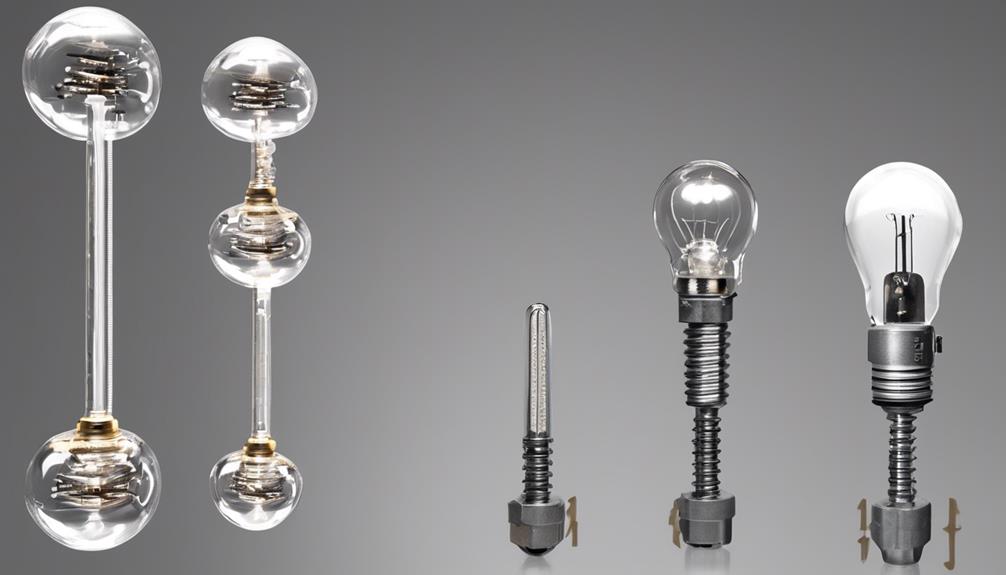
When selecting the right bulb base, it's crucial to consider the socket types available and their compatibility with fixtures. Understanding the wattage limitations of different bases is also essential to ensure optimal performance and safety.
These points will help us make informed decisions when choosing the right base for our specific lighting needs.
Socket Types
Selecting the appropriate bulb base is crucial for ensuring that the socket type matches the fixture and provides optimal functionality for the intended application.
When it comes to socket types, there are several options available, each with its own unique features and advantages:
- Edison Screw (E26/E27): This is the most common type, and it's compatible with a wide range of fixtures. It's easy to install and widely available.
- Bayonet Mount (B22): Known for its secure locking mechanism, this type is popular in certain regions and provides a stable connection.
- GU10: Often used in track lighting and recessed fixtures, this type offers a twist and lock mechanism for easy installation and removal.
Carefully considering the socket type ensures compatibility and enhances the overall performance of the lighting system.
Compatibility With Fixtures
To ensure proper illumination and functionality of the lighting fixture, it is crucial to carefully select a bulb base that is compatible with the specific fixture design and requirements. Fixture compatibility and socket types play a crucial role in determining which bulb base to use. Different fixtures require specific socket types, such as E26, GU10, or G9, to ensure a secure fit and proper electrical connection. It's also important to consider wattage limitations and base compatibility. Using a bulb with wattage higher than the fixture's recommendation can lead to overheating and potential damage. Therefore, understanding the fixture's wattage limitation and ensuring the base compatibility with the fixture is essential for optimal performance and safety.
```markdown
| Fixture Compatibility | Socket Types |
|---|---|
| Chandeliers | E12, E26 |
| Track Lighting | GU10, MR16 |
| Wall Sconces | E12, E26, G9 |
| Ceiling Fans | E12, E26, GU24 |
| Table Lamps | E26, G9 |
```
Wattage Limitations
We must always consider the wattage limitations and ensure the base compatibility with the fixture to guarantee optimal performance and safety. When selecting a bulb, it's crucial to adhere to the voltage requirements and wattage limitations specified by the fixture manufacturer. This ensures that the bulb operates within the designated parameters, preventing overheating and potential hazards.
Furthermore, paying attention to wattage limitations contributes to energy efficiency and bulb longevity, optimizing the performance and lifespan of the lighting system.
- Adhering to voltage requirements and wattage limitations is crucial for safety and performance.
- Operating within specified parameters prevents overheating and potential hazards.
- Consideration of wattage limitations contributes to energy efficiency and bulb longevity.
Base Compatibility

Ensuring bulb base compatibility is crucial for successful horticultural endeavors, as it directly impacts the proper functioning of the lighting system. When considering base compatibility, it's essential to understand the different base types and installation methods.
The most common base types include Edison screw bases (E26/E27), bayonet bases (B22), and pin bases (GU10). Each base type requires a specific installation method, and using the wrong base for a fixture can lead to electrical connection issues, improper fit, and potential safety hazards.
Edison screw bases are installed by twisting the bulb into the socket, while bayonet bases are pushed and then twisted into place. Pin bases, on the other hand, require insertion and a slight twist to lock them securely.
It's crucial to match the base type of the bulb with the corresponding socket to ensure a secure fit and proper electrical connection. Incorrect base installation can lead to flickering, poor contact, and premature bulb failure.
Understanding base compatibility and proper installation methods is fundamental to maintaining a reliable and efficient horticultural lighting system.
Applications and Considerations
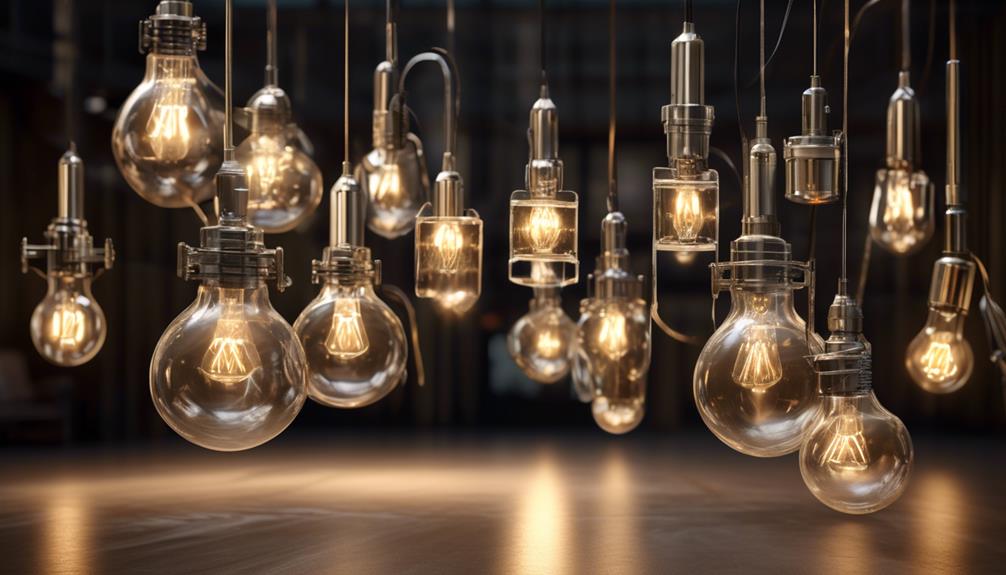
When considering the applications and considerations of different bulb bases, it's essential to evaluate the specific lighting requirements and environmental factors of the horticultural setting. This ensures that the chosen bulb base is suitable for the intended application and can withstand the installation considerations unique to each horticultural environment.
- Lighting Requirements: Understanding the specific lighting needs of the plants in the horticultural setting is crucial. Different bulb bases emit varying light spectrums and intensities, so selecting a base that aligns with the plants' requirements is essential for optimal growth and development.
- Environmental Factors: Factors such as humidity, temperature, and airflow can impact the performance and longevity of bulb bases. It's important to choose bases that can withstand the environmental conditions in the horticultural setting to ensure reliable and consistent performance.
- Installation Considerations: Evaluating the ease of installation, maintenance requirements, and compatibility with existing fixtures is vital. Selecting a bulb base that aligns with the installation considerations of the horticultural environment streamlines the process and reduces potential challenges during setup and maintenance.
Frequently Asked Questions
Can I Use a Bulb With a Different Base Than the Fixture It's Intended For?
We can use adapters to fit bulbs with different bases into fixtures, but compatibility issues might arise. It's crucial to ensure that the voltage requirements match and to be cautious with DIY solutions.
Using the wrong base can lead to electrical problems and potential hazards. It's best to consult a professional if unsure.
Always prioritize safety when dealing with electrical components.
Are There Any Safety Concerns When Using Different Types of Bulb Bases in the Same Fixture?
There can be safety concerns when using different types of bulb bases in the same fixture. Compatibility issues may arise, leading to improper connection and potential overheating. This could pose a fire hazard or cause damage to the fixture.
It's crucial to ensure that the bulb base matches the fixture to maintain safety and functionality. Always consult the manufacturer's guidelines for the proper bulb base to use in a specific fixture to avoid any potential risks.
Can I Convert a Fixture With One Type of Base to Accommodate a Different Type of Base?
Yes, you can convert a fixture with one type of base to accommodate a different type of base. For example, we recently modified a fixture with an E26 base to accommodate an E12 base by using an adapter.
Base compatibility is crucial, and the installation process involves potential modifications and electrical considerations. It's essential to ensure the compatibility of the new base with the fixture and make any necessary adjustments for a safe and functional installation.
How Do I Know if a Specific Bulb Base Will Fit My Fixture?
Choosing the right base for your fixture is crucial. To ensure compatibility, examine the existing base and compare it to the specifications of the new bulb base. Check the size, shape, and pin configuration to determine if it will fit your fixture.
Finding compatible bulb bases involves understanding the type of socket and the requirements of your fixture. Always consult the manufacturer's guidelines for a precise match.
Are There Any Limitations on the Types of Bulbs I Can Use With a Specific Base, Such as Wattage or Bulb Type?
Absolutely, there are limitations on the types of bulbs you can use with a specific base. Wattage compatibility is crucial to prevent overheating and potential electrical hazards.
Additionally, there may be restrictions on bulb types, such as incandescent, LED, or halogen, based on the fixture's design.
It's essential to consult the fixture's specifications to ensure the proper bulbs are used to maintain safety and optimal performance.
Conclusion
In conclusion, understanding the different types of bulb bases is crucial for choosing the right one for your lighting needs.
From standard screw bases to pin bases, each type has its own compatibility and applications.
So, next time you're in the market for a new bulb, ask yourself: which base will best suit my lighting fixture and environment?
- About the Author
- Latest Posts
Introducing Ron, the home decor aficionado at ByRetreat, whose passion for creating beautiful and inviting spaces is at the heart of his work. With his deep knowledge of home decor and his innate sense of style, Ron brings a wealth of expertise and a keen eye for detail to the ByRetreat team.
Ron’s love for home decor goes beyond aesthetics; he understands that our surroundings play a significant role in our overall well-being and productivity. With this in mind, Ron is dedicated to transforming remote workspaces into havens of comfort, functionality, and beauty.
Appliances
6 Home HVAC Air Filtration Enhancements Explained
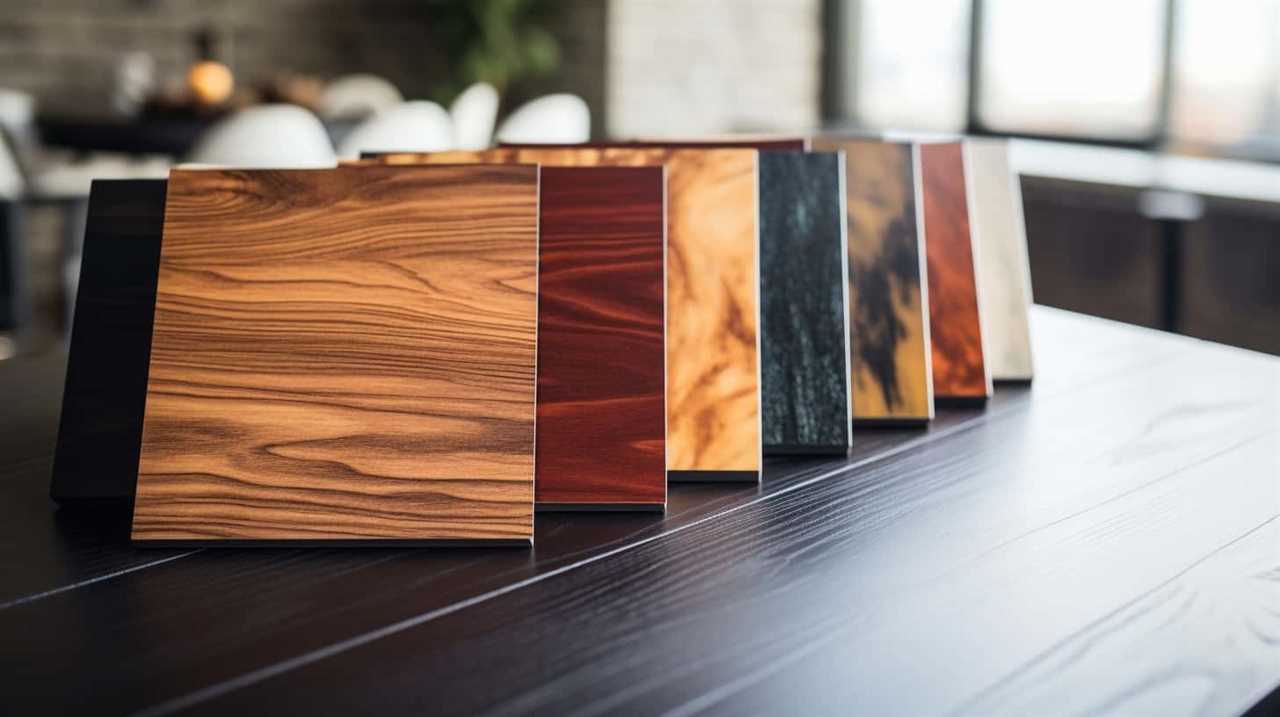
Are you searching for ways to improve the air quality in your home HVAC system? You’ve come to the right place! In this article, we will discuss six home HVAC air filtration upgrades that can significantly enhance the air you breathe.
From high-efficiency air filters to UV-C air purification, electrostatic air cleaners, activated carbon filters, HEPA filtration systems, and smart air quality monitors, we will delve into each enhancement and provide you with a comprehensive understanding of how they work and their benefits.
Whether you are concerned about allergens, pollutants, or simply want cleaner air, these enhancements are designed to help you achieve mastery over your indoor air quality.
So, let’s dive in and explore the world of home HVAC air filtration enhancements!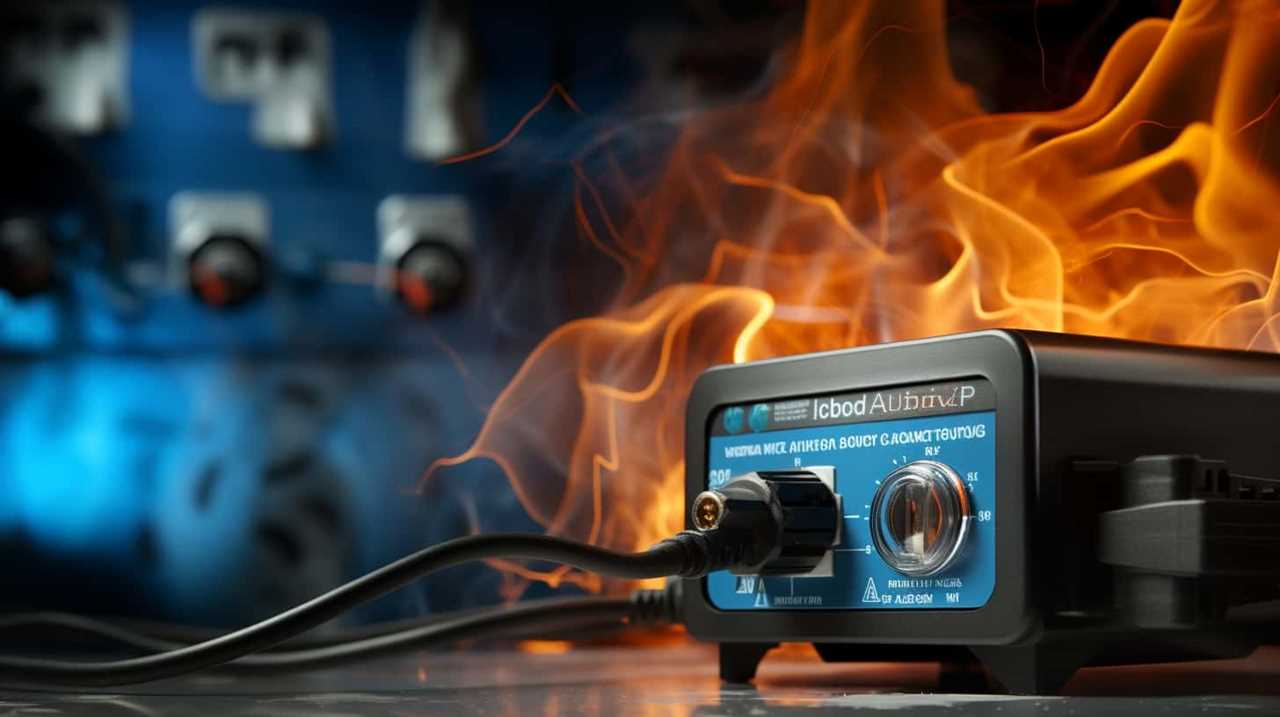
Key Takeaways
- High-efficiency air filters, UV-C air purification, electrostatic air cleaners, and activated carbon filters are some of the air filter enhancements available for HVAC systems.
- These enhancements offer benefits such as capturing a higher percentage of airborne particles, eliminating contaminants and odors, attracting even the smallest particles, and removing odors and chemical pollutants.
- Smart air quality monitors provide accurate data on air quality parameters, notifications and alerts for exceeding thresholds, historical data analysis for trend identification, and real-time monitoring for informed decisions.
- When considering air filter enhancements, it is important to consider installation challenges and proper positioning, check system requirements and compatibility with smart home platforms, and ensure compatibility with Wi-Fi networks and other smart devices. Integration into existing HVAC systems may require professional assistance.
High-Efficiency Air Filters
In our exploration of home HVAC air filtration enhancements, let’s begin by discussing the benefits of using high-efficiency air filters.
When it comes to air filter maintenance, choosing the right air filter is crucial for optimal performance and indoor air quality. High-efficiency air filters are designed to capture a higher percentage of airborne particles, such as dust, pollen, pet dander, and mold spores. This not only improves the air quality in your home but also reduces the amount of pollutants that can potentially trigger allergies or respiratory issues.
One of the main advantages of high-efficiency air filters is their superior filtration efficiency. They’re capable of trapping smaller particles, often as small as 0.3 microns, which is significantly smaller than what standard air filters can capture. This means that high-efficiency filters can remove a greater number of harmful particles from the air, making them highly effective in reducing indoor air pollution.
Furthermore, high-efficiency air filters have a longer lifespan compared to standard filters. This means less frequent air filter replacements, saving you time and money in the long run. However, it’s important to note that these filters may have higher initial costs, but the benefits they provide outweigh the investment.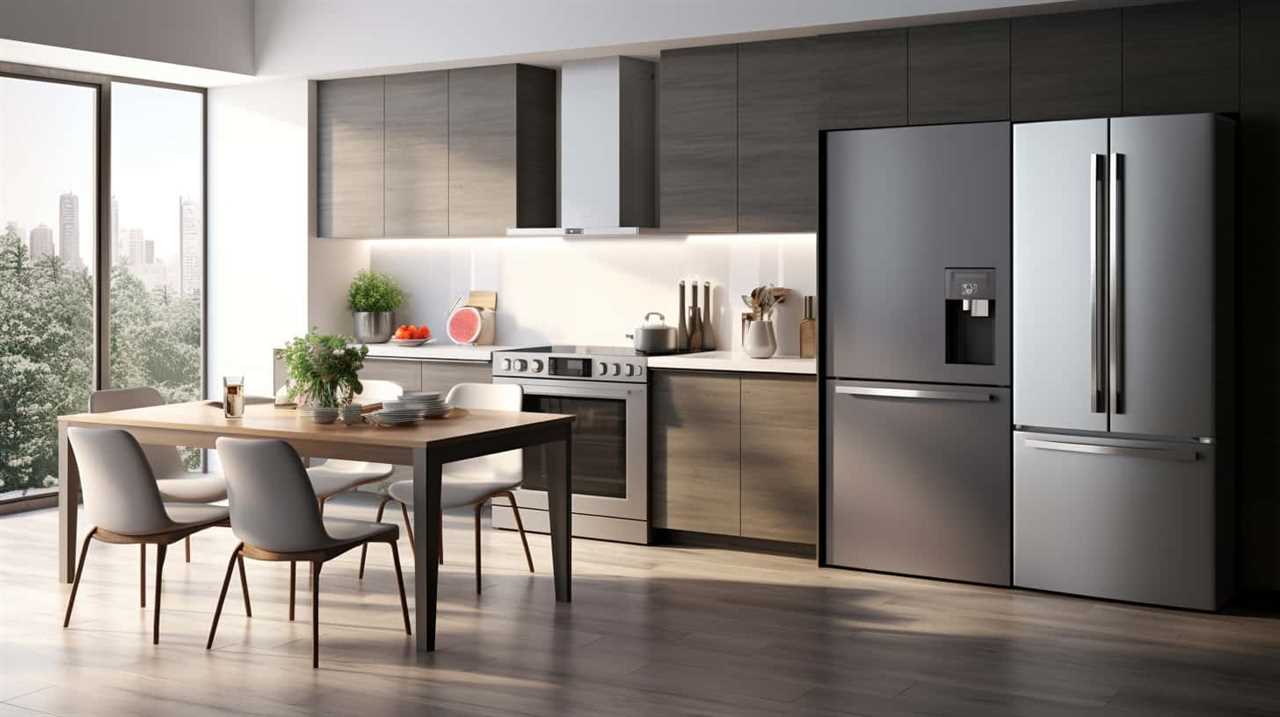
In conclusion, high-efficiency air filters offer superior air filtration capabilities, enhancing indoor air quality and reducing potential health risks.
Now that we’ve explored the benefits of using high-efficiency air filters, let’s delve into the next section about ‘uv-c air purification’, which provides an additional layer of air sanitization.
UV-C Air Purification
Continuing our exploration of home HVAC air filtration enhancements, let’s now delve into the benefits of incorporating UV-C air purification into your system.
UV-C air purification utilizes ultraviolet light to eliminate airborne contaminants, such as bacteria, viruses, mold, and allergens, providing a cleaner and healthier indoor environment.

One of the key benefits of UV-C air purification is its ability to reduce the spread of infectious diseases. UV-C light destroys the DNA or RNA of microorganisms, rendering them unable to replicate and infect individuals. This technology has been proven effective in reducing the transmission of airborne diseases, including tuberculosis, influenza, and COVID-19.
Furthermore, UV-C air purification helps to improve indoor air quality by eliminating odors caused by biological contaminants. It neutralizes volatile organic compounds (VOCs) and breaks down chemical pollutants, ensuring fresher and cleaner air in your home.
Recent advancements in UV-C air purification technology have made it more efficient and reliable. The development of high-intensity UV-C lamps and improved design of air purification systems have resulted in increased effectiveness and reduced energy consumption. Additionally, the integration of UV-C air purification with smart HVAC systems allows for automated control and continuous monitoring of air quality.
Incorporating UV-C air purification into your home HVAC system can provide numerous benefits, including improved indoor air quality, reduced transmission of infectious diseases, and elimination of unpleasant odors. With the advancements in technology, UV-C air purification has become a valuable addition to any home air filtration system.
Electrostatic Air Cleaners
Let’s now delve into the benefits of incorporating electrostatic air cleaners into our home HVAC system, as they offer another effective method for enhancing air filtration.
Electrostatic air cleaners are devices that use an electrostatic charge to remove pollutants from the air. These cleaners work by attracting and capturing airborne particles, such as dust, pet dander, and pollen, onto charged plates or filters.
One of the main benefits of electrostatic air filtration is its ability to capture smaller particles that traditional filters may miss. The electrostatic charge helps to trap even the tiniest particles, improving overall air quality and reducing the risk of respiratory issues. Additionally, electrostatic air cleaners can be more cost-effective in the long run compared to disposable filters, as they’re reusable and only require periodic maintenance.
Speaking of maintenance, it’s important to properly care for electrostatic air cleaners to ensure optimal performance. Regular cleaning of the charged plates or filters is necessary to remove accumulated particles. This can be done by gently washing the plates or filters with water and mild detergent, then allowing them to dry thoroughly before reinstallation. It’s also recommended to check the manufacturer’s guidelines for specific maintenance instructions.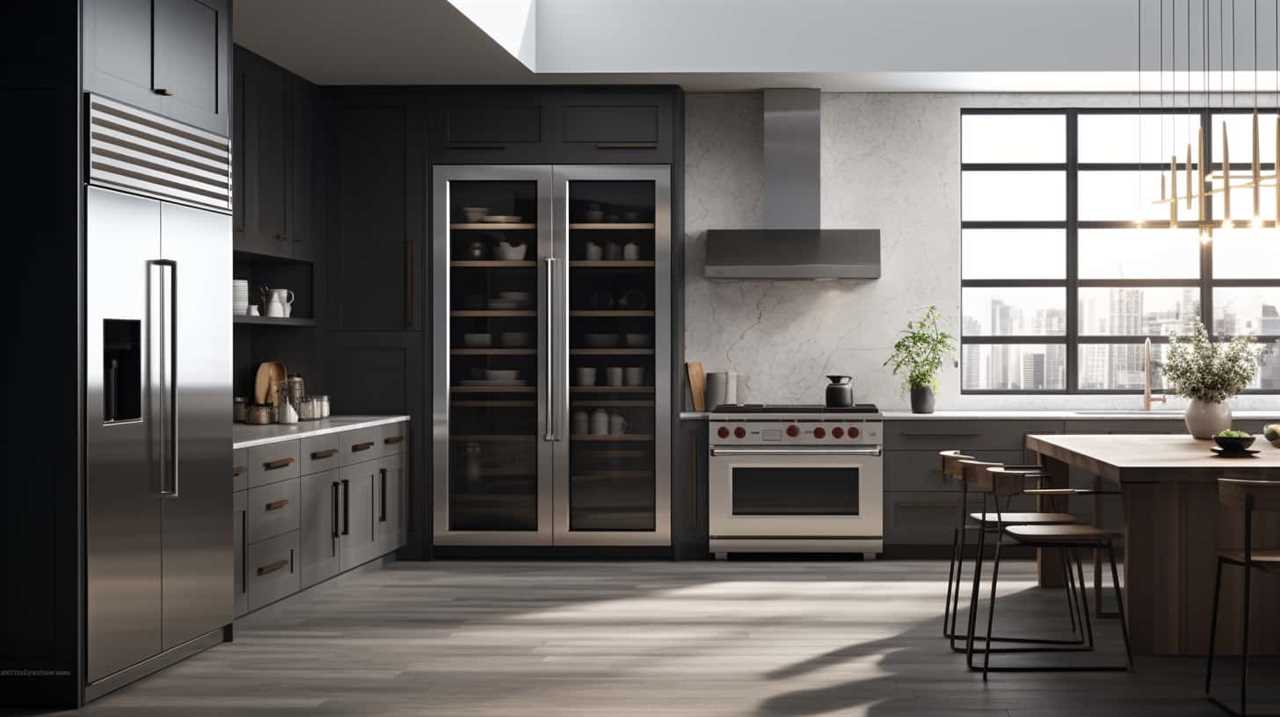
Incorporating electrostatic air cleaners into our home HVAC system can significantly improve air filtration, capturing even the smallest particles and enhancing overall air quality. With proper maintenance, these devices can provide long-lasting benefits and contribute to a healthier living environment.
Activated Carbon Filters
As we explore the next enhancement in home HVAC air filtration, let’s delve into the benefits of incorporating activated carbon filters into our system.
Activated carbon filters are a crucial component of carbon filter technology, which has revolutionized air purification advancements. These filters possess unique properties that make them highly effective in improving indoor air quality.
Here are three key advantages of utilizing activated carbon filters:
- Adsorption: Activated carbon filters have a vast surface area with countless tiny pores that adsorb harmful gases, chemicals, and volatile organic compounds (VOCs) present in the air. This process removes these pollutants, ensuring cleaner and healthier indoor air.
- Odor Reduction: The activated carbon material has excellent odor-absorbing capabilities. It can neutralize and eliminate unpleasant smells that may originate from cooking, pets, or other sources. By reducing odors, activated carbon filters contribute to a more pleasant and comfortable living environment.
- Removal of Harmful Substances: Activated carbon filters excel in trapping potentially harmful substances like formaldehyde, benzene, and other toxic compounds. These filters effectively capture and retain these pollutants, preventing their circulation in the air and reducing the risk of respiratory issues.
Incorporating activated carbon filters into our HVAC system is a significant step towards achieving optimal air quality. With their remarkable adsorption properties, odor reduction capabilities, and ability to remove harmful substances, activated carbon filters play a crucial role in ensuring a healthier indoor environment.
HEPA Filtration Systems
To further enhance our home HVAC air filtration system, we can explore the benefits of incorporating HEPA filtration systems. HEPA stands for High Efficiency Particulate Air, and these filters are designed to capture and remove tiny particles from the air, including dust, pollen, pet dander, and even bacteria and viruses. The latest HEPA technology ensures that these filters are highly efficient in trapping particles as small as 0.3 microns in size, making them incredibly effective in improving indoor air quality.
Here is a table comparing the benefits of HEPA filtration systems:
| Benefits of HEPA Filtration Systems | |
|---|---|
| Highly efficient in capturing tiny particles | |
| Removes dust, pollen, pet dander, bacteria, and viruses | |
| Helps improve indoor air quality | |
| Reduces the risk of respiratory illnesses |
HEPA filtration systems are particularly beneficial for individuals with allergies, asthma, or other respiratory conditions. They can significantly reduce the presence of airborne allergens and irritants, providing a healthier and more comfortable indoor environment.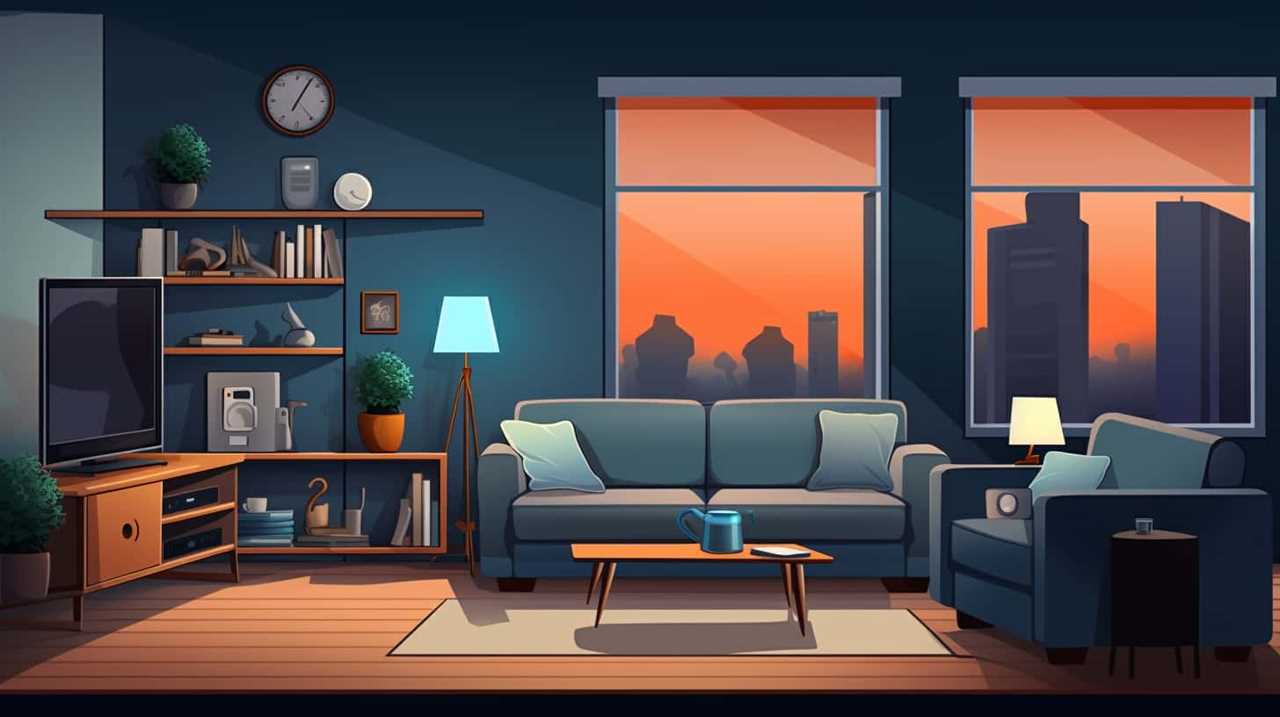
Smart Air Quality Monitors
Smart Air Quality Monitors are an essential addition to any home HVAC system. These monitors provide real-time data on the air quality inside your home, allowing you to make informed decisions about your indoor environment.
With a wide range of top-rated air quality monitors available, you can find one that suits your needs and budget. Additionally, installation is simple and compatibility with existing HVAC systems is usually seamless.
Benefits of Smart Monitors
We can enhance our home HVAC air filtration system by utilizing smart monitors, which provide numerous benefits for monitoring air quality. Smart monitors offer advanced features that enable real-time air quality monitoring, allowing homeowners to make informed decisions about their indoor environment.
The benefits of smart monitors include:
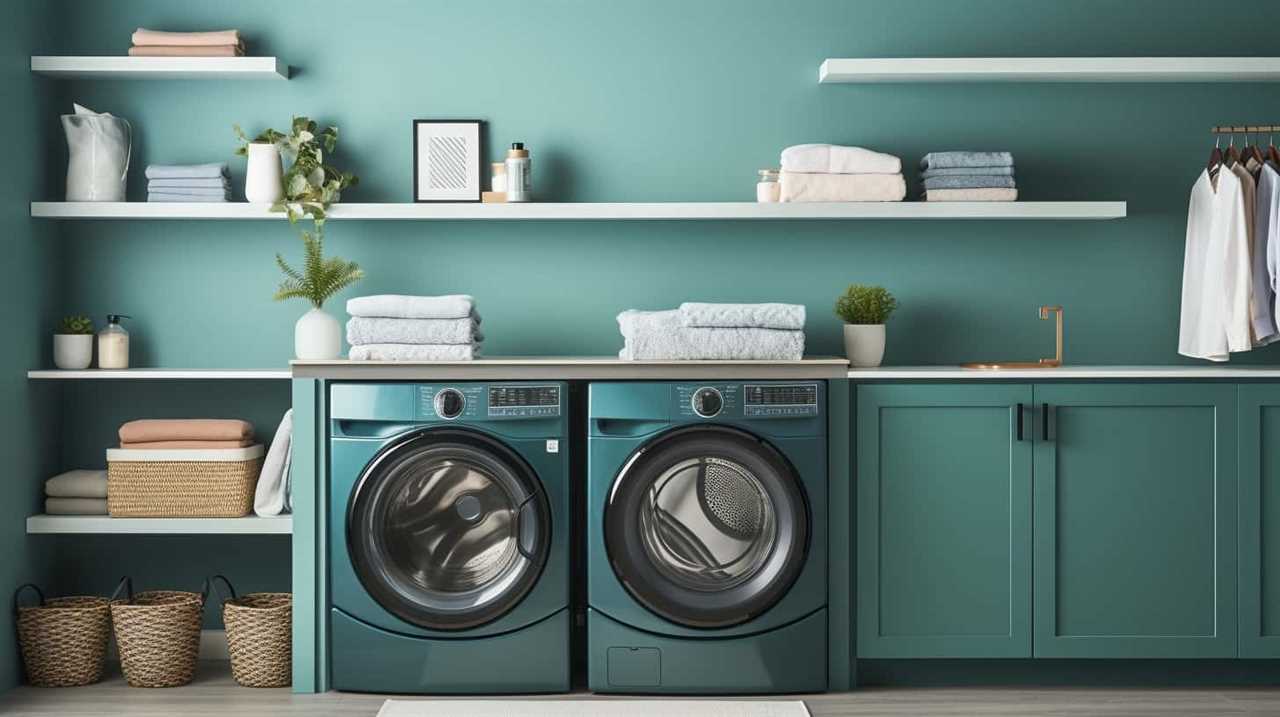
- Accurate Data: Smart monitors utilize advanced sensors to provide precise and reliable data on air quality parameters such as particulate matter, volatile organic compounds (VOCs), and carbon dioxide levels.
- Notifications and Alerts: Smart monitors can send notifications and alerts to homeowners when air quality levels exceed predefined thresholds, helping them take immediate action to improve indoor air quality.
- Historical Data Analysis: Smart monitors store historical data, allowing homeowners to analyze trends and patterns in air quality over time, helping them identify potential issues and make necessary adjustments to their HVAC system.
Top-Rated Air Quality Monitors
Continuing our exploration of enhancing home HVAC air filtration systems, let’s now delve into the realm of top-rated air quality monitors that provide valuable insights into the indoor environment. These smart air quality monitors are equipped with advanced air quality sensors, enabling them to detect and analyze various pollutants present in the indoor air. By monitoring the air quality in real-time, these devices help homeowners identify potential sources of indoor air pollution and take necessary measures to improve the air quality. To give you a better understanding, here is a table showcasing some of the top-rated air quality monitors available in the market:
| Air Quality Monitor | Features | Price |
|---|---|---|
| Monitor A | Sensor X, Sensor Y, Sensor Z | $XXX |
| Monitor B | Sensor X, Sensor Z, Sensor W | $XXX |
| Monitor C | Sensor Y, Sensor Z, Sensor W | $XXX |
| Monitor D | Sensor X, Sensor Y, Sensor W | $XXX |
Investing in a top-rated air quality monitor can provide valuable insights into the indoor air quality, allowing homeowners to create a healthier living environment.
Installation and Compatibility
When installing and ensuring compatibility of smart air quality monitors, it’s important to consider various factors. Here are three key items to keep in mind:
- Installation Challenges: Installing smart air quality monitors may pose certain challenges. These devices often require specific mounting locations and proper positioning to accurately measure air quality. Additionally, integrating them into the existing HVAC system may require professional assistance, as complex wiring and configurations may be involved.
- System Requirements: Before purchasing a smart air quality monitor, it’s crucial to check its system requirements. Some monitors may require a certain operating system or compatibility with specific smart home platforms. It’s important to ensure that the monitor can be seamlessly integrated into your home automation system.
- Compatibility: Ensuring compatibility between the smart air quality monitor and other devices in your home is essential. It’s advisable to check if the monitor works with your existing Wi-Fi network and can communicate with other smart devices. Compatibility issues can affect the monitor’s functionality and the overall effectiveness of your HVAC air filtration system.
Frequently Asked Questions
How Often Should I Replace My High-Efficiency Air Filter?
When it comes to replacing high-efficiency air filters, it’s important to consider a few factors. The frequency of replacement depends on various factors such as the manufacturer’s recommendations, the quality of the filter, and the level of pollutants in your home.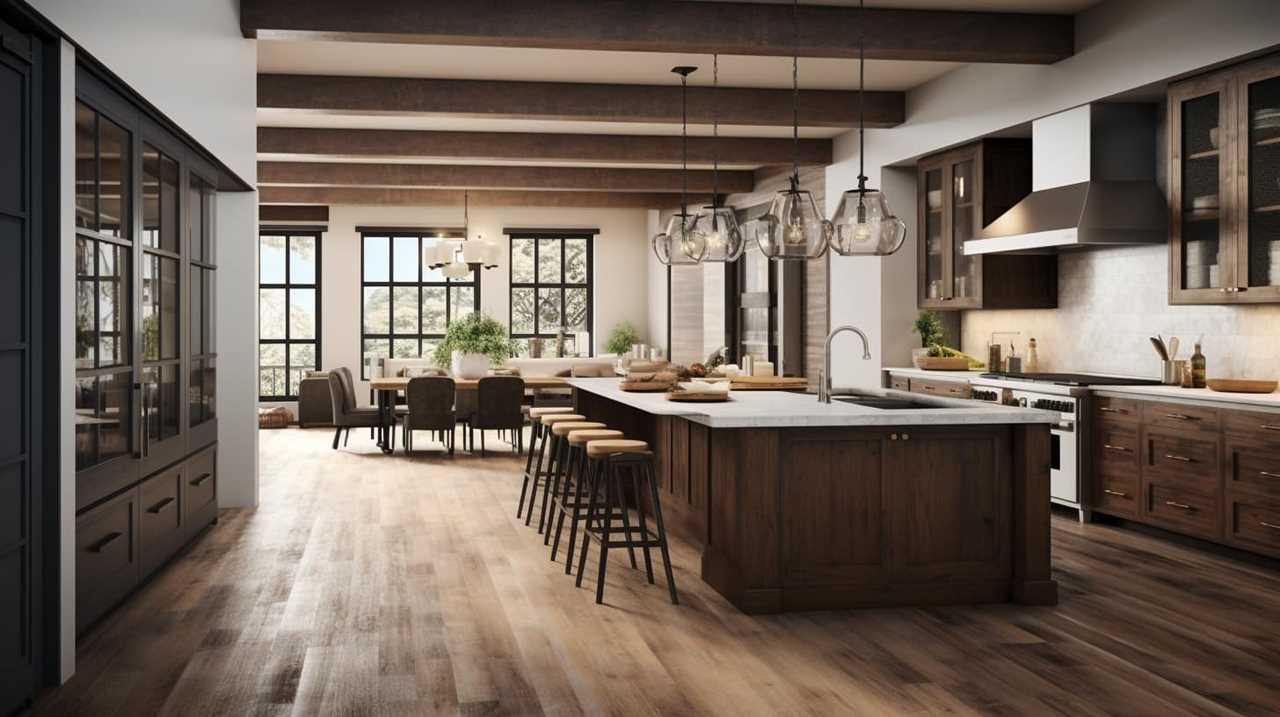
Signs of a dirty air filter include reduced airflow, increased energy consumption, and poor indoor air quality.
To choose the right high-efficiency air filter, consider the MERV rating, filter size, and compatibility with your HVAC system.
Regularly inspect and replace your filter to maintain a clean and healthy home environment.
Are UV-C Air Purifiers Safe to Use Around Pets and Children?
UV-C air purifiers are a safe and effective way to improve indoor air quality. They use ultraviolet light to kill bacteria, viruses, and mold spores. While they’re generally safe to use around pets and children, it’s important to follow the manufacturer’s instructions and avoid direct exposure to the UV-C light.
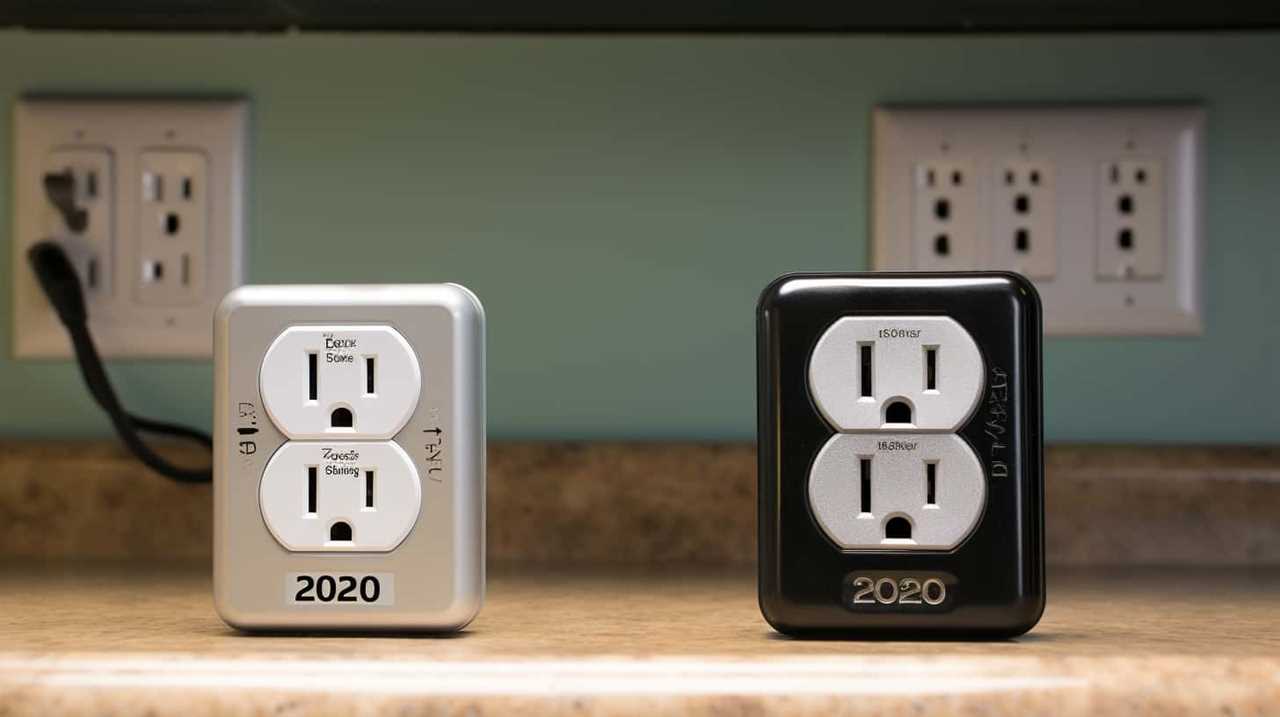
Potential side effects of UV-C air purifiers include eye and skin irritation, so it’s best to use them in well-ventilated areas and consult with a professional if you have any concerns.
Can Electrostatic Air Cleaners Remove Odors From My Home?
Yes, electrostatic air cleaners can effectively remove odors from your home. These cleaners use an electrostatic charge to attract and trap particles, including odor-causing molecules, on a collection plate.
The efficiency of electrostatic air cleaners in removing odors depends on various factors, such as the size and type of particles, as well as the maintenance and cleaning of the device.
Benefits of using electrostatic air cleaners include improved indoor air quality, reduction in allergens and pollutants, and a fresh-smelling home environment.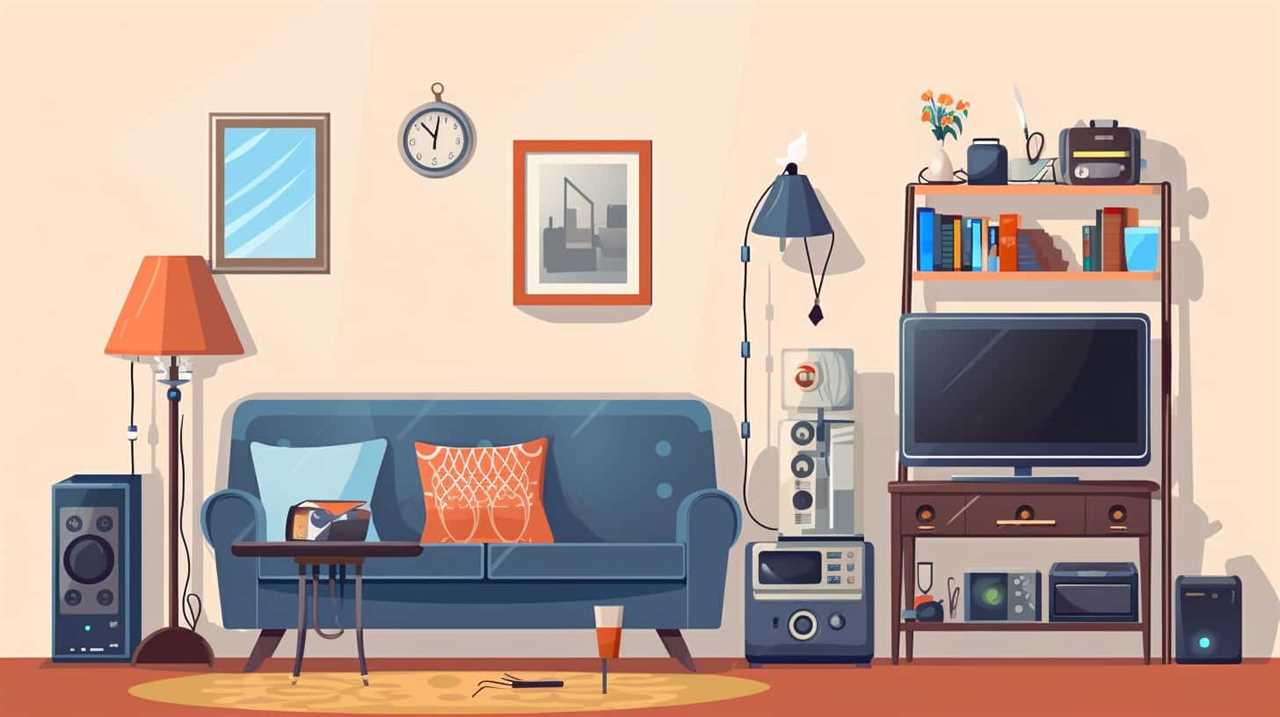
How Long Does Activated Carbon Last in Air Filters Before Needing Replacement?
Activated carbon in air filters typically lasts between 2-3 months before needing replacement. It’s important to regularly maintain and replace air filters to ensure the continued effectiveness of the activated carbon.
Can a HEPA Filtration System Eliminate All Allergens and Pollutants From My Home?
A HEPA filtration system is highly effective in eliminating allergens and pollutants from our homes. It works by trapping microscopic particles, such as dust mites, pet dander, and pollen, ensuring cleaner and healthier air.
The benefits of air purification using HEPA filters include improved indoor air quality, reduced allergy symptoms, and a cleaner living environment.
With its advanced technology and high filtration efficiency, a HEPA filtration system is a reliable solution for those seeking to eliminate allergens and pollutants from their homes.
– How Do These Air Filtration Enhancements Improve Home HVAC Systems?
Air filtration enhancements are crucial in improving home air filtration by removing contaminants and allergens. These enhancements help optimize HVAC systems, ensuring cleaner and healthier indoor air. Features like electrostatic filters, UV lights, and HEPA filters can effectively improve air quality, making your home a safe and comfortable environment.
Conclusion
In conclusion, enhancing the air filtration system in your home HVAC system is essential for maintaining optimal indoor air quality.
From high-efficiency air filters to UV-C air purification and electrostatic air cleaners, there are various options available to suit your needs.
Additionally, activated carbon filters, HEPA filtration systems, and smart air quality monitors can further enhance the efficiency and effectiveness of your air filtration system.
Remember, a breath of fresh air is worth its weight in gold.
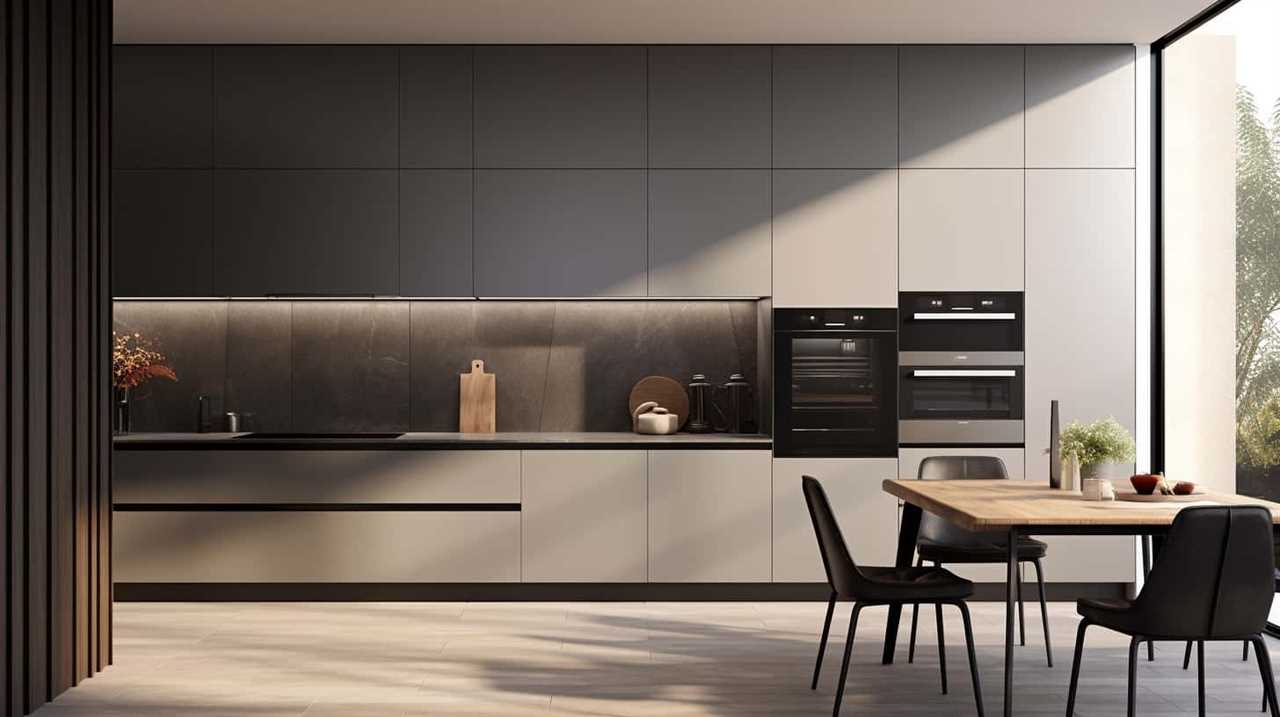
- About the Author
- Latest Posts
Introducing Charles, the Editor in Chief at ByRetreat, whose passion for interior design and editorial excellence elevates every remote workspace to new heights. With his keen eye for detail, impeccable taste, and expertise in design, Charles brings a wealth of knowledge and creativity to the ByRetreat team.
As the Editor in Chief of a renowned lifestyle blog, Charles has honed his skills in curating captivating content and staying up-to-date with the latest trends in interior design. His deep understanding of aesthetics and the power of storytelling through design enables him to create remote workspaces that are not only visually stunning but also rich in personality and meaning.
Smart Home Automation
Integrating Smart Home Devices Without Sacrificing Style
Optimize your living space with smart home devices that elevate style and functionality—discover how to blend tech seamlessly into your decor.

Integrating smart home devices into your space enhances functionality while maintaining style. Choose devices that align with your decor, like customizable smart lighting that adjusts to your mood or motorized blinds that blend seamlessly into your windows. Concealed technology can keep things minimalist, and stylish appliances can fit right into your design aesthetic. Consider solutions that optimize energy use, enhancing efficiency and reducing bills. With the right choices, you can enjoy both high tech and chic decor in your home. Discover how you can create a harmonious living environment that highlights both style and practicality.
Key Takeaways
- Choose smart devices with stylish designs and customizable options to seamlessly blend with your home decor.
- Utilize concealed technology, like motorized blinds and hidden speakers, to maintain a minimalist aesthetic.
- Opt for smart lighting systems that allow color adjustments to enhance ambiance while serving practical purposes.
- Integrate voice-controlled assistants and customizable panels to enhance functionality without compromising on style.
The Importance of Aesthetic Integration
Aesthetic integration of smart home devices is essential because it guarantees technology enhances your space rather than clashes with your design.
When you incorporate smart home devices, you want them to align with your interior design and reflect modern aesthetics. Choosing devices that blend seamlessly into your decor assures a cohesive look.
Concealed technology, like motorized blinds or artwork TVs, preserves a minimalist vibe while adding advanced tech functionality. These choices allow you to maintain visual appeal without sacrificing practicality.
Thoughtful lighting solutions, such as dimmable LEDs, not only improve ambiance but also integrate smart capabilities into your home's aesthetic.
Key Benefits of Smart Home Technology

When you embrace smart home technology, you release a range of benefits that can transform your living space.
You'll enjoy enhanced energy efficiency, improved home security, and seamless aesthetic integration, all tailored to fit your lifestyle.
Let's explore how these advantages can make your home smarter and more comfortable.
Enhanced Energy Efficiency
Smart home technology can help you cut energy consumption by 30-40%, leading to lower utility bills while keeping your home comfortable.
With smart home automation, you can optimize energy efficiency through automated systems that detect unoccupied rooms. These systems adjust energy usage accordingly, guaranteeing you don't waste power when spaces are empty.
Utilizing smart lighting systems that feature LED technology can further enhance your energy savings. These systems consume less power and can be programmed to operate only during necessary hours, which helps you maintain comfort levels without overspending on utilities.
Remote monitoring capabilities empower you to make informed decisions about your energy usage. By analyzing real-time data and occupancy patterns, you can adjust your smart devices to guarantee maximum efficiency.
Additionally, integrating smart devices can lead to potential insurance discounts, as many companies offer rebates or lower premiums for homes equipped with energy-efficient technology.
Embracing these innovations not only promotes sustainability but also enhances your lifestyle, making it easier to manage energy consumption effectively while enjoying the comforts of home.
Improved Home Security
Enhanced home security through smart technology gives you peace of mind, allowing you to monitor and control your property from anywhere. As a homeowner, you can take advantage of various smart security systems that enhance your safety with innovative features.
Here are some key benefits:
- Remote monitoring: Keep an eye on your home via your smartphone, wherever you are.
- Smart locks: Enjoy keyless entry and customize access codes for guests or service providers.
- Real-time alerts: Receive immediate notifications about unusual activity, making sure you're always informed.
- Automated emergency responses: Smart smoke and carbon monoxide detectors can alert emergency services when needed.
These features work together to deter potential intruders and make certain your home is secure.
With automated outdoor lighting simulating occupancy and providing visibility at night, you can further enhance security.
Seamless Aesthetic Integration
While ensuring your home is secure, you can also elevate its aesthetic appeal through smart technology that seamlessly blends functionality with style.
This integration doesn't just enhance security; it enriches your interior design. Imagine using smart lighting to create customizable lighting that sets the perfect ambiance for any occasion. With the ability to adjust brightness and color, you can transform your living space from a cozy retreat to a vibrant gathering spot—all without sacrificing elegance.
Smart appliances are crafted to complement modern interior designs, ensuring they enhance the visual appeal of your home. Thoughtful placement of these devices, such as concealed motorized blinds, maintains clean lines and a minimalist look.
This approach helps create a luxurious environment where technology and style coexist harmoniously.
Customization Options for Style

When you think about smart home devices, style is just as important as functionality.
You can choose from stylish designs that fit perfectly with your home's decor, ensuring everything looks cohesive.
With options that seamlessly integrate into your space, you won't have to sacrifice aesthetics for convenience.
Stylish Device Designs
Smart home devices now offer a range of stylish designs and customization options that let you seamlessly integrate technology into your decor. You can choose smart devices that enhance your interior spaces, blending functionality and style without sacrificing aesthetic appeal. Here are some options to evaluate:
- Customizable smart lighting: Adjust colors to match your room's ambiance.
- Minimalist profiles: Select sleek designs that complement your decor.
- Hidden features: Enjoy motorized blinds or art TVs that maintain a clean look.
- Interchangeable covers: Personalize smart devices with skins to match seasonal changes.
These stylish device designs allow you to personalize your smart devices, ensuring they fit seamlessly into your home.
Whether you're looking for a pop of color or a device that blends into the background, the options available today cater to your taste.
With the right choices, you can elevate both the functionality and style of your home while enjoying the benefits of modern technology.
Seamless Aesthetic Integration
Integrating smart home devices into your decor goes beyond just functionality; it involves customizing their aesthetic to enhance your living space. With a variety of designer styles available, you can choose smart home technology that complements your interior design without sacrificing modern convenience.
For instance, smart lighting systems allow you to adjust customized brightness and colors, helping you create the perfect ambiance tailored to your preferences.
Consider incorporating concealed technology solutions like motorized blinds or art TVs, which blend seamlessly into your decor while maintaining a minimalist aesthetic. These options keep your living spaces looking clean and stylish, all while enhancing energy usage efficiency.
Programmable features in these devices let you personalize settings for different times of the day or occasions, ensuring that the technology feels like a natural part of your home.
Additionally, using natural materials alongside smart devices can elevate your space's luxury, marrying contemporary design with timeless appeal.
Choosing the Right Devices

Choosing the right devices involves finding options that not only enhance functionality but also complement your home's style. When selecting smart home devices, keep these tips in mind:
- Aesthetically pleasing designs: Look for sleek smart lighting fixtures that blend seamlessly with your interior decor.
- Customizable options: Choose devices that allow you to adjust colors and brightness, enhancing ambiance for different moods and occasions.
- Modern finishes: Opt for smart speakers and displays with contemporary designs that serve as functional tech and decorative elements.
- Smart appliances: Consider options that integrate smoothly into your kitchen or bathroom, featuring customizable panels to maintain a cohesive look.
Blending Functionality and Design

Balancing functionality and design is essential when selecting smart home devices that enhance both your living space and lifestyle.
In today's smart home design, integrating technology seamlessly into your decor can elevate your home's aesthetic while providing practical benefits.
Interior designers often recommend smart lighting fixtures that not only illuminate your space but also add an elegant touch. These fixtures can create customizable atmospheres tailored to your mood, all while maintaining a chic appearance.
Concealed technology solutions, like motorized blinds and artwork TVs, are perfect for those who prefer a clean and minimalist aesthetic. You won't have to sacrifice style for advanced security with smart devices that blend into your surroundings.
Voice-controlled assistants can further enhance your home's functionality and aesthetics, allowing you to control your environment effortlessly.
Future Trends in Smart Home Design

As technology evolves, homeowners are increasingly prioritizing sustainability and wellness in their smart home designs. You can expect future trends to focus on a harmonious blend of eco-friendly features and health-enhancing technology integration. With continuous advancements, smart home design is transforming, making it essential for modern living.
Here are some key trends you should watch for:
- Eco-friendly features that reduce energy use and your carbon footprint.
- Health and wellness technology that monitors air quality and promotes better living conditions.
- Augmented reality (AR) tools that let you visualize furniture and decor before making a purchase.
- Virtual reality (VR) experiences that enhance your decision-making for interior design.
Frequently Asked Questions
What Are the Ethical Issues With Smart Homes?
Smart homes raise ethical issues like data privacy, surveillance, and security. You might worry about who owns your information, the potential for hacking, and the environmental impact of constantly upgrading devices. Balancing convenience with responsibility is essential.
What Are the Most Vulnerable Smart Home Devices?
Smart cameras and locks are your home's guardians yet can be breached with weak passwords. Smart speakers listen but might expose your privacy. Balancing convenience and security is vital for protecting your smart home.
What Are the Barriers to Smart Home Technology?
You might face barriers to smart home technology like perceived complexity, compatibility issues, security concerns, high initial costs, and a lack of awareness about benefits. These factors can really hold you back from fully embracing smart devices.
Are Smart Home Devices Invading Our Privacy?
Imagine a hidden camera in your living room, capturing every moment. That's how many feel about smart home devices. They do invade your privacy, collecting data and risking security, unless you actively manage your settings.
Conclusion
In a world where your toaster can tweet and your fridge knows your diet better than you do, integrating smart home devices isn't just practical—it's an art form.
You don't have to sacrifice style for convenience; instead, you can impress your guests with both sleek design and tech-savvy features.
So go ahead, let your home be the envy of the neighborhood.
After all, who wouldn't want a living room that's smarter than their teenager?
- About the Author
- Latest Posts
Introducing Ron, the home decor aficionado at ByRetreat, whose passion for creating beautiful and inviting spaces is at the heart of his work. With his deep knowledge of home decor and his innate sense of style, Ron brings a wealth of expertise and a keen eye for detail to the ByRetreat team.
Ron’s love for home decor goes beyond aesthetics; he understands that our surroundings play a significant role in our overall well-being and productivity. With this in mind, Ron is dedicated to transforming remote workspaces into havens of comfort, functionality, and beauty.
Appliances
Guide to Choosing and Installing the Right Lighting for Each Room
Start your journey to perfect lighting with our guide and discover how to illuminate each room effectively while enhancing functionality and ambiance.
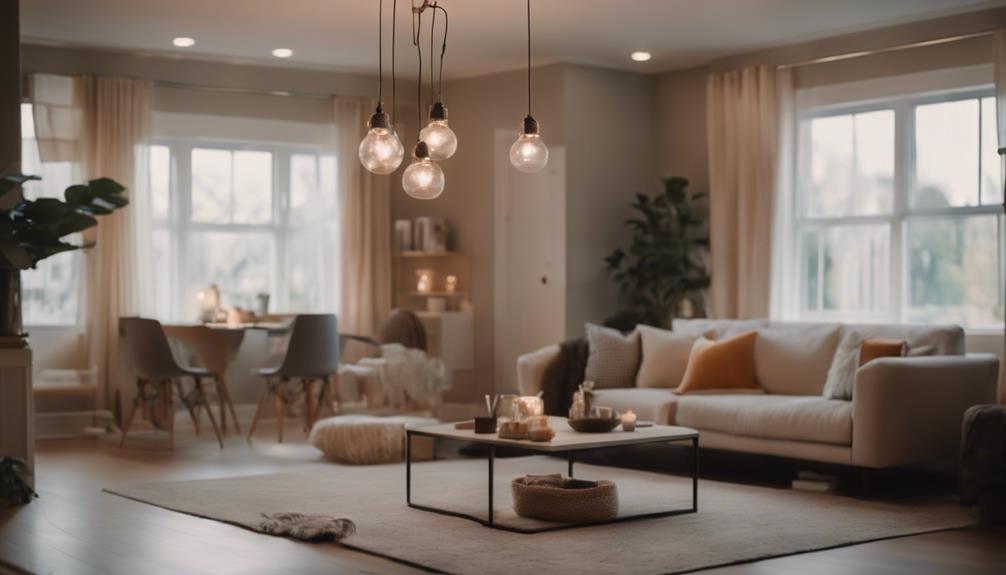
Choosing and installing the right lighting can transform your space. Start by understanding the three essential layers: ambient, task, and accent lighting. Each room has specific needs; for example, kitchens need bright, clear light for cooking, while bedrooms benefit from soft, warm tones. Select fixtures that fit these purposes and consider using dimmable options for flexibility. Guarantee proper placement to minimize shadows and enhance functionality. Don't forget about energy-efficient bulbs to save on costs. Want more details on mastering your lighting setup? You're just getting started on the journey to illuminate your home perfectly.
Key Takeaways
- Identify the three essential lighting layers: ambient, task, and accent, to create a balanced and functional environment in each room.
- Select appropriate lumens for each room: living rooms (1,500-3,000), kitchens (5,000-10,000), and bedrooms (3,000-6,000) for optimal lighting.
- Choose energy-efficient LED bulbs for longevity, ensuring they match the fixture's wattage limits and desired color temperature.
- Install fixtures at recommended heights to minimize glare, with dining lights 30-36 inches above tables and office lights at eye level (40-48 inches).
Importance of Proper Lighting
Understanding the importance of proper lighting can transform your space, enhancing both its beauty and functionality. When you implement effective lighting design, you can greatly influence the overall mood of any room. By balancing ambient lighting with task lighting, you create a welcoming atmosphere while ensuring adequate lighting for activities, boosting productivity.
Consider how different lighting schemes can eliminate dark corners and create inviting spaces. For instance, in work areas, good task lighting can enhance focus and efficiency, while soft ambient lighting can promote relaxation in living spaces. Seasonal changes highlight the need for flexible lighting solutions that adapt to varying natural light conditions throughout the year.
In educational settings, studies have shown that adequate lighting improves behavior and fosters a better learning environment. So, when you're choosing your lighting, remember that the right blend of light not only improves aesthetics but also enhances functionality.
Whether you're aiming for a cozy nook or a bright workspace, understanding the importance of proper lighting will guide you in making choices that elevate your home or office experience.
Understanding Lighting Layers
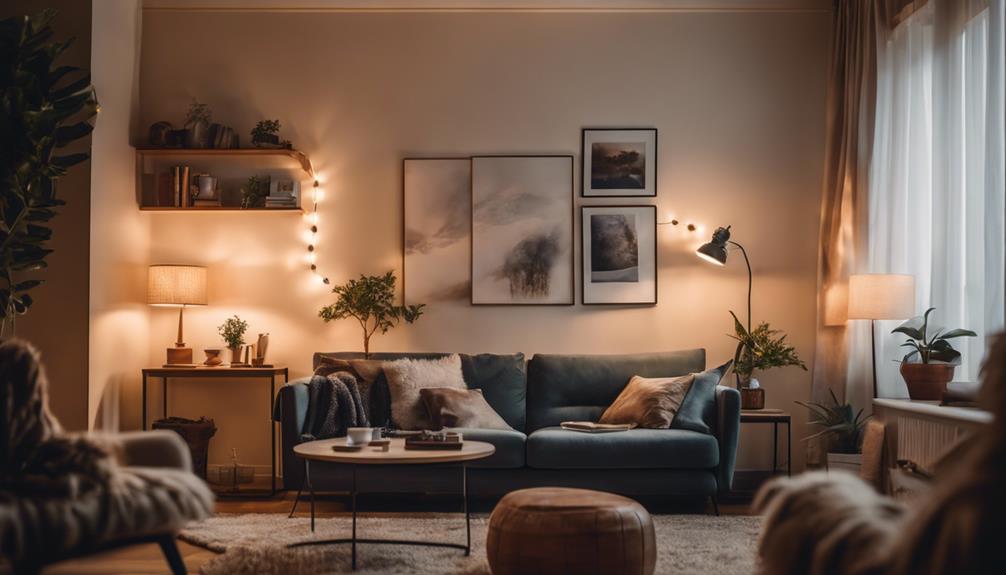
To create a well-lit space, you need to understand the three essential layers of lighting: ambient, task, and accent.
Each layer serves a distinct purpose, from providing overall illumination to highlighting key features.
Ambient, Task, Accent Lighting
Creating a well-balanced lighting scheme involves integrating ambient, task, and accent lighting to enhance both the functionality and aesthetic appeal of your space.
Ambient lighting serves as the foundation, providing overall illumination through fixtures like chandeliers, wall sconces, and recessed lighting. This layer guarantees comfort and safety by eliminating dark corners and shadows.
Next, task lighting focuses on specific areas where you need concentrated illumination, such as under-cabinet lights in the kitchen or a table lamp in your reading nook. It enhances comfort and efficiency while producing glare-free light directly on the task at hand.
Finally, accent lighting adds visual interest by highlighting specific objects or architectural features, such as artwork or plants. This layer creates focal points and elevates the overall design aesthetic of the room.
When you work with a lighting designer, they can help you achieve a layered look that maximizes energy efficiency and mood.
Layering for Visual Depth
Layering lighting effectively transforms a room, adding visual depth and enhancing the overall ambiance.
By combining ambient, task, and accent lighting, you create a dynamic environment that caters to both functionality and aesthetics.
Start with ambient lighting as your foundation, providing overall illumination throughout the space.
Next, incorporate task lighting to focus on specific areas where activities occur, like reading or cooking.
To add visual interest and highlight architectural features, use accent lighting strategically.
The placement of your lighting fixtures and careful bulb selection are critical to avoid harsh shadows and guarantee balanced light.
Consider varying the brightness of each layer to achieve the desired mood, and don't forget the power of dimmer switches.
By installing dimmers, you can easily adjust the intensity of your lighting, adapting it to different activities and times of day.
Ultimately, successful layering lighting creates a well-lit space that feels inviting and functional.
Whether you're illuminating a cozy reading nook or showcasing beautiful artwork, mastering these layers will elevate the entire atmosphere of your room.
Types of Light Fixtures
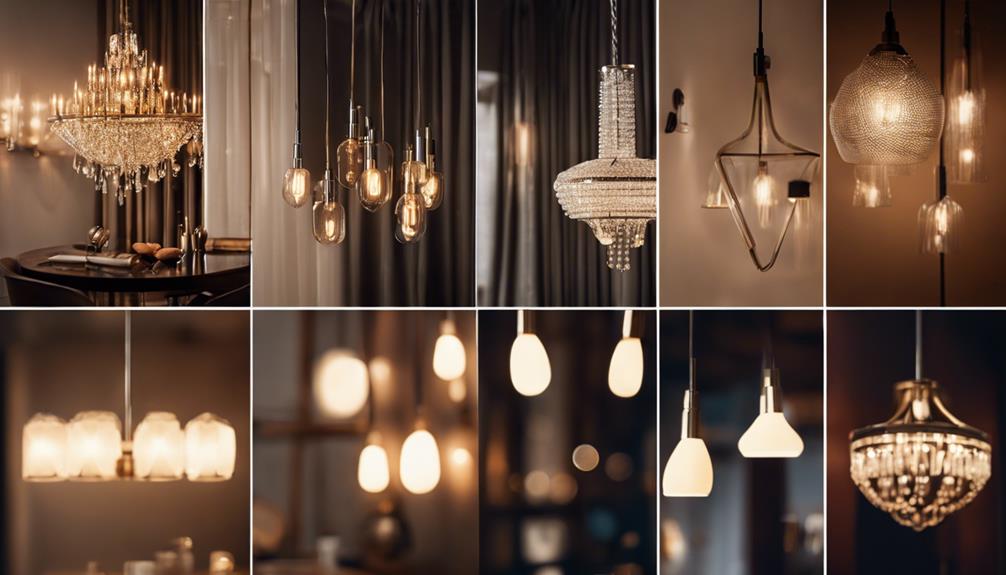
When it comes to selecting light fixtures, you'll want to reflect on how they fit into your overall lighting plan.
Think about the different roles they can play, from ambient lighting that fills a room to task lighting that helps you focus on specific activities.
Accent lighting can also highlight key features, adding depth and interest to your space.
Ambient Lighting Options
Ambient lighting plays an essential role in setting the mood of a space, and there are several types of fixtures to choose from, including overhead lights, chandeliers, and recessed lighting. These lighting fixtures provide overall illumination and create a comfortable environment for you and your guests.
Overhead lighting is a classic choice, while chandeliers add elegance to dining areas. Recessed lighting is particularly effective, as it distributes light evenly, reducing shadows and enhancing brightness throughout the room.
If you're looking for a stylish touch, consider pendant lights, which work beautifully over dining tables or kitchen islands, all while providing necessary illumination. Wall sconces are another great option, especially in hallways or living rooms, adding both function and aesthetic appeal.
To maximize flexibility, opt for dimmable lighting. This allows you to adjust brightness according to the time of day or specific activities, creating just the right atmosphere. By choosing energy-efficient options, you can enjoy a well-lit space without excessive energy costs.
Whether you prefer soft ambient lighting or brighter settings, there's a perfect fixture to meet your needs.
Task Lighting Essentials
Selecting the right task lighting is essential for enhancing your productivity and ensuring comfort in workspaces. By incorporating various lighting fixtures, you can create a focused and efficient environment. Here are some popular options to evaluate:
| Type of Fixture | Purpose | Benefits |
|---|---|---|
| Table Lamps | Ideal for desks and reading nooks | Adjustable brightness and style |
| Floor Lamps | Great for larger spaces | Space-saving and mobile |
| Under-Cabinet Lights | Perfect for kitchens and workspaces | Direct illumination and glare reduction |
| Adjustable Task Lighting | Versatile for different tasks | Customizable light intensity and dimmable lighting |
When choosing your task lighting, aim for a lumens requirement of at least 300 in key areas like home offices or kitchens. Opt for fixtures that minimize glare, such as those with shades or diffusers. Adjustable task lighting allows you to tailor the brightness according to your needs, promoting energy savings and comfort. With the right combination of table lamps, floor lamps, and under-cabinet lights, you'll create an efficient workspace that meets your lighting needs perfectly.
Accent Lighting Choices
Accent lighting choices can dramatically enhance your space by highlighting artwork, architectural details, or plants, adding depth and visual interest to your decor. Selecting the right fixtures is essential to achieve your desired effect.
Here are some popular options:
- Track lights: These versatile fixtures let you direct light exactly where you want it, making them perfect for highlighting specific areas.
- Wall-mounted picture lights: Ideal for illuminating artwork, they create a gallery feel and draw attention to your favorite pieces.
- LED strip lights: These can be installed under shelves or along architectural features, providing a subtle glow that complements ambient lighting.
When choosing your accent lighting, pay attention to the color temperature of the bulbs. Opting for warm tones generally creates a more inviting ambiance, enhancing the overall appeal of your space.
Room-Specific Lighting Needs
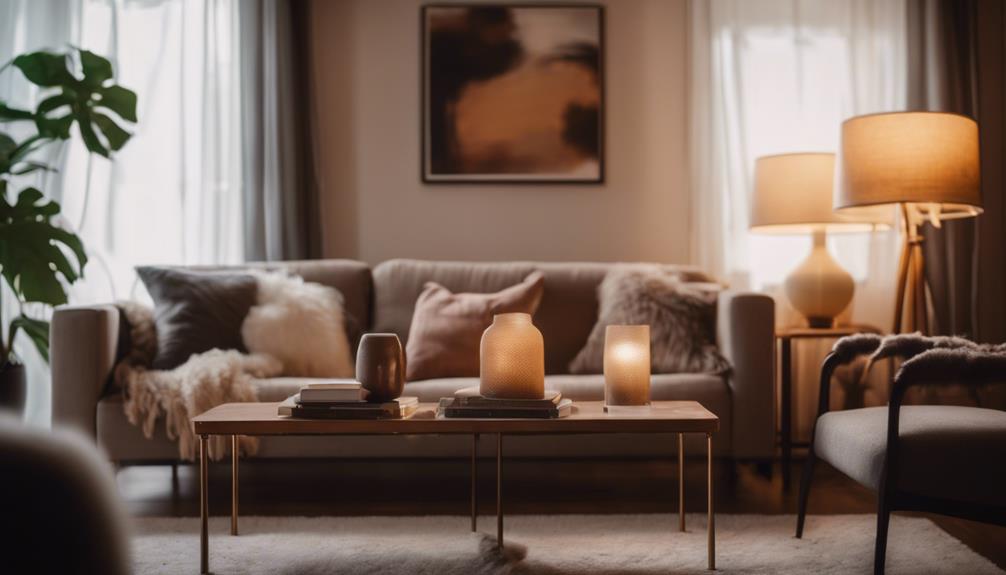
Understanding the specific lighting needs of each room can enhance both functionality and comfort in your home. When planning your lighting, consider the ambient lighting and task lighting requirements for each space.
For living rooms, aim for 1,500-3,000 lumens to create an inviting atmosphere.
In kitchens, you'll need considerably more—5,000-10,000 lumens for ambient lighting and about 450 lumens for focused task lighting in work areas.
Bedrooms should have 3,000-6,000 lumens overall, with at least 1,200 lumens for reading or desk tasks.
Bathrooms benefit from 4,000-8,000 lumens of ambient lighting, plus at least 1,700 lumens for task lighting around mirrors.
For entries, hallways, and stairs, it's vital to guarantee safety; provide 1,200-4,000 lumens for entries and stairs, and 1,200-2,500 lumens for hallways.
Using LED bulbs can improve energy efficiency while providing the necessary brightness.
When selecting light fixtures, think about how to create layers of light that complement your room layout. A well-thought-out lighting plan is fundamental to meet these room-specific needs effectively.
Light Bulb Selection

Choosing the right light bulbs can greatly impact the atmosphere and functionality of your space. When selecting light bulbs, consider factors like color temperature, lumens, and wattage. For instance, warm white bulbs (around 2700K) create a cozy ambiance, while cooler temperatures (5000-6000K) are ideal for task lighting.
Here are some key points to remember:
- LED Bulbs: Opt for these energy-efficient options due to their longevity and lower heat output.
- Lumens: Pay attention to lumens; for example, 800 lumens typically match a standard 60-watt incandescent bulb.
- Wattage: Choose bulbs that comply with fixture wattage limits to avoid overheating and fire risks.
Tips for Effective Installation

To guarantee a successful lighting setup, start by measuring your ceiling height and determining the ideal hanging distance for fixtures like pendant lights or chandeliers. Aim for 30-36 inches above tables to provide optimal visibility without obstructing sightlines.
When you install task lighting for work, consider the function of the room. For example, install task lighting directly above kitchen counters or desks to enhance visibility. Layer lighting by combining ambient, task, and accent fixtures, as ambient lighting provides overall illumination while preventing the room from feeling flat.
Here's a quick reference table to help guide your installation:
| Room Type | Fixture Type | Height Recommendation |
|---|---|---|
| Dining Room | Chandelier | 30-36 inches above table |
| Kitchen | Pendant Light | 30-36 inches above counters |
| Office | Desk Lamp | Eye level (about 40-48 inches) |
| Living Room | Floor Lamp | 58-64 inches from the floor |
| Bathroom | Vanity Light | 66-70 inches above the floor |
Make certain to install fixtures at appropriate heights and distances to avoid glare and shadows. Using dimmers can also help adjust lighting levels for different tasks.
Enhancing Ambiance With Dimmers
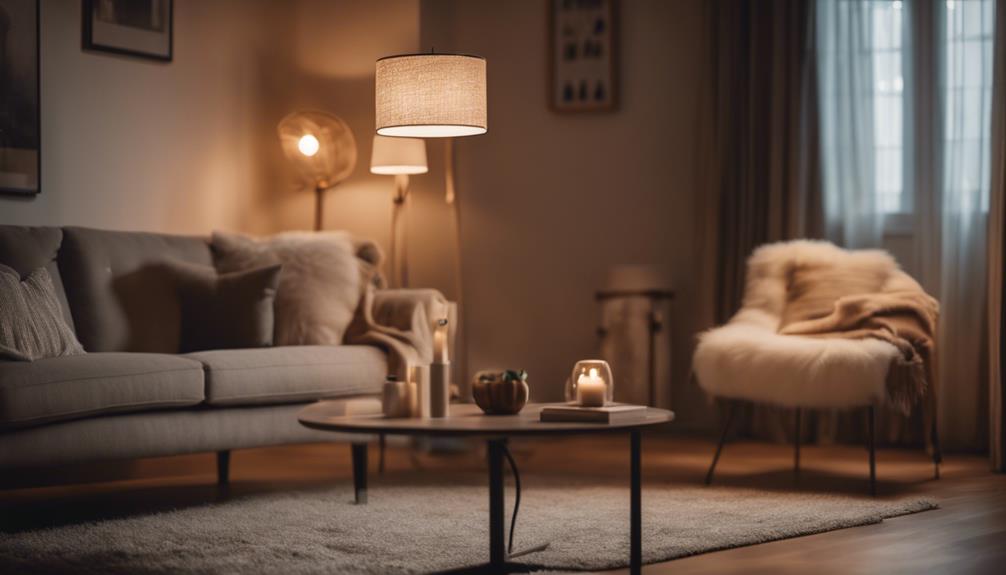
Dimmers let you effortlessly adjust lighting levels, setting the perfect mood for any occasion. By incorporating dimmers into your lighting setups, you can create inviting atmospheres that enhance your mood and well-being.
Whether you need bright task lighting for cooking or a soft glow for a cozy evening, adjustable lighting gives you the flexibility to match your needs.
Here are some benefits of using dimmers:
- Energy efficiency: Dimming your lights can reduce wattage, saving on energy bills and extending LED bulb lifespan.
- Versatile fixtures: Dimmers work with various bulb types, including LED, incandescent, and fluorescent, making them adaptable for any space.
- Enhanced ambiance: Adjustable lighting allows you to create the perfect environment for relaxation or social gatherings.
Investing in dimmers is a simple yet effective way to elevate your home's atmosphere. With the right dimming solutions, you can transform any room into a comfortable, inviting space that suits your lifestyle.
Frequently Asked Questions
How to Decide Where to Put Lights in a Room?
To decide where to put lights, assess the room's function, identify key areas needing illumination, and consider the layout. Guarantee even light distribution and avoid shadows to enhance both functionality and aesthetics.
What Lighting Is Best for Each Room?
Imagine each room as a canvas; you'll paint it with light. For cozy living rooms, aim for warmth. Brighten kitchens with brilliance. Create tranquility in bedrooms, and let dining rooms sparkle. Balance is key in every space.
What Is the Rule of Thumb for Room Lighting?
A great rule of thumb for room lighting is to use two to three light sources per space. This creates balance and layers, ensuring your rooms feel inviting and functional for any activity you have planned.
How to Arrange Lights in a Room?
To arrange lights in a room, you'll want to layer ambient, task, and accent lighting. Position lamps thoughtfully, use dimmers for mood adjustments, and highlight features to create a balanced, inviting atmosphere.
Conclusion
By choosing the right lighting for each room, you're not just illuminating your space; you're weaving a tapestry of warmth and comfort that wraps around you.
Each layer of light dances together, creating moods that stir your soul and spark joy in everyday moments.
So, as you begin this illuminating journey, remember: your home is a canvas, and with thoughtful lighting, you can paint it in shades of tranquility and inspiration.
Let your light shine!
- About the Author
- Latest Posts
Introducing Ron, the home decor aficionado at ByRetreat, whose passion for creating beautiful and inviting spaces is at the heart of his work. With his deep knowledge of home decor and his innate sense of style, Ron brings a wealth of expertise and a keen eye for detail to the ByRetreat team.
Ron’s love for home decor goes beyond aesthetics; he understands that our surroundings play a significant role in our overall well-being and productivity. With this in mind, Ron is dedicated to transforming remote workspaces into havens of comfort, functionality, and beauty.
-

 Retreat7 days ago
Retreat7 days agoDIY Aromatherapy Diffusers for a Spa-Like Atmosphere at Home
-

 Retreat2 weeks ago
Retreat2 weeks agoThe Profitability of Retreat Centers: A Financial Analysis
-

 Retreat1 week ago
Retreat1 week agoUnusual DIY Projects: Designing a Space Probe in Bitlife
-

 Retreat2 weeks ago
Retreat2 weeks agoComprehensive Review: Are Home Decorators Ceiling Fans Worth the Investment?
-

 Retreat2 weeks ago
Retreat2 weeks agoIs Opening a Home Decor Store Profitable in 2024?
-

 Retreat1 week ago
Retreat1 week agoHow to Create a Zen Garden for Your Retreat Center
-

 Retreat2 weeks ago
Retreat2 weeks agoStep-By-Step Tutorial: Reupholstering a Chair With Buttons
-

 Retreat5 days ago
Retreat5 days agoThe Psychology of Color in Retreat Center Design












